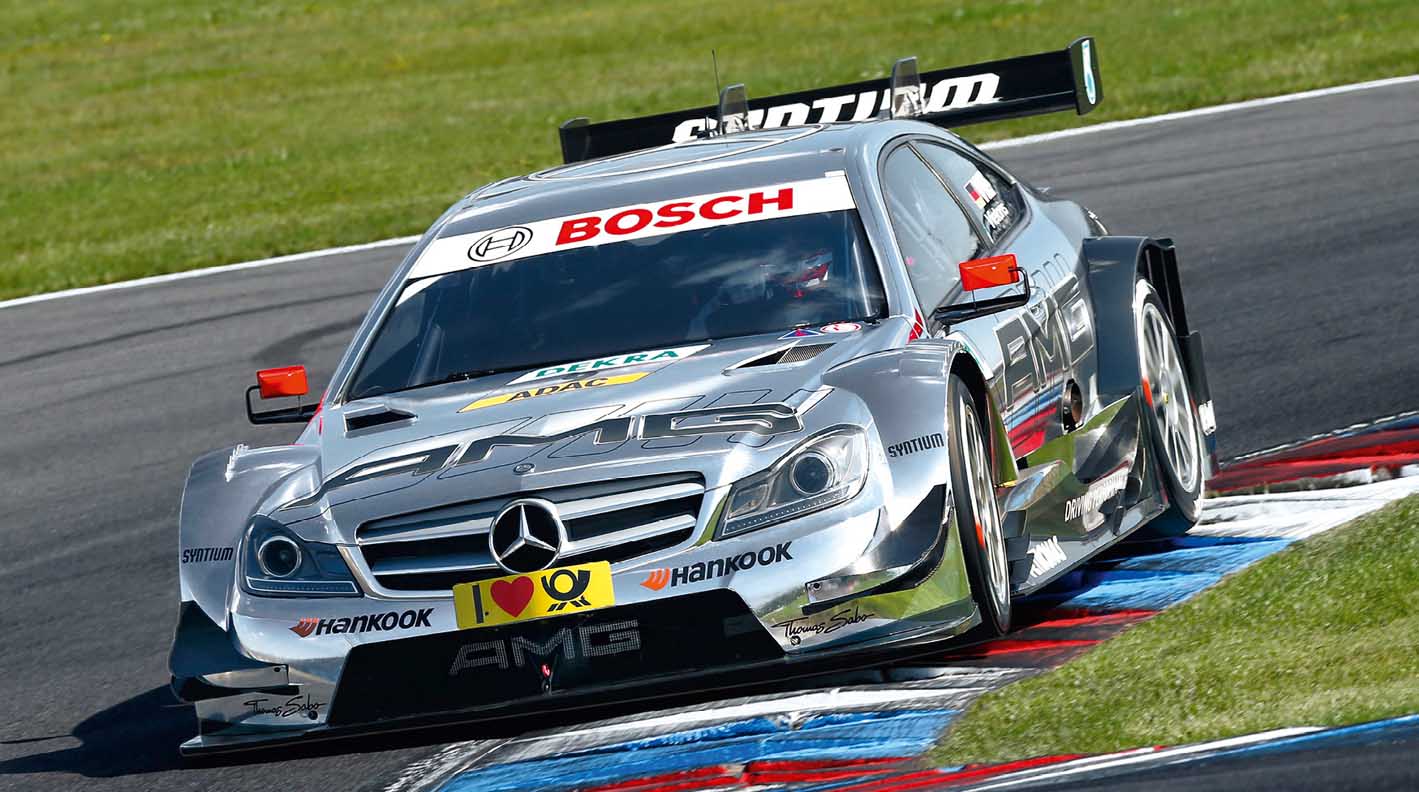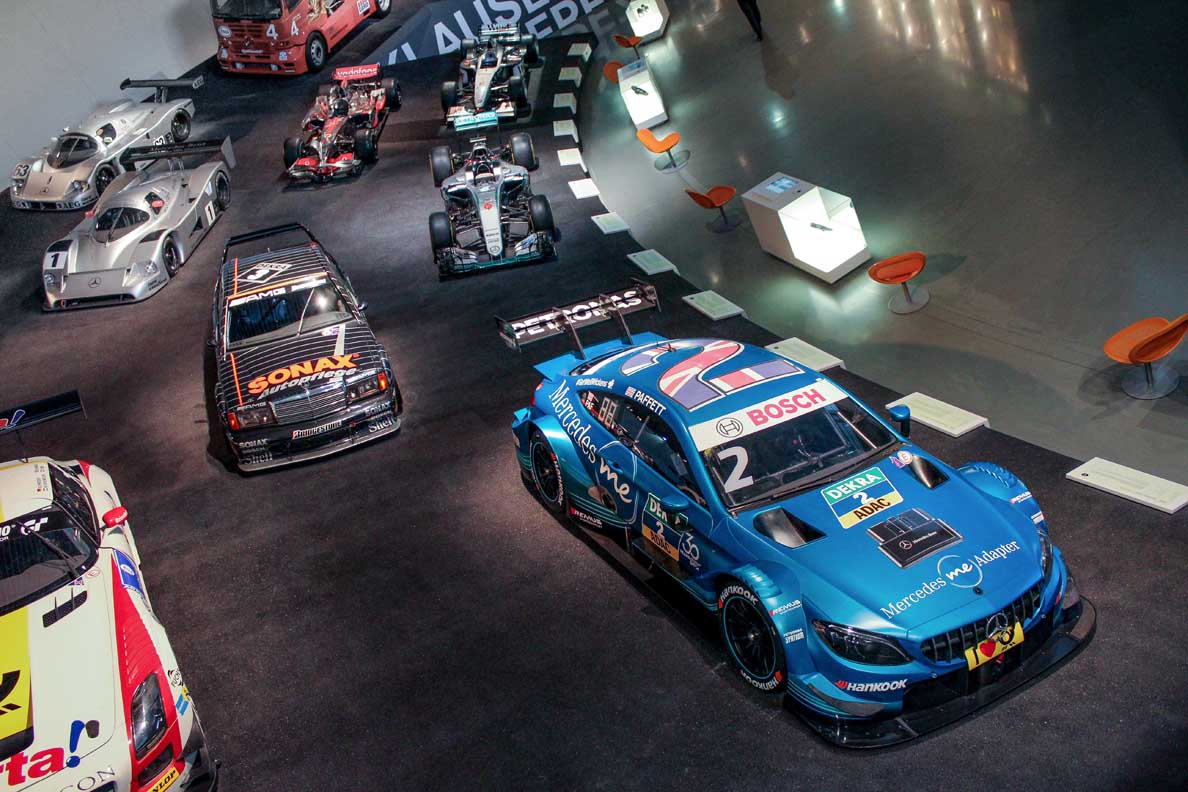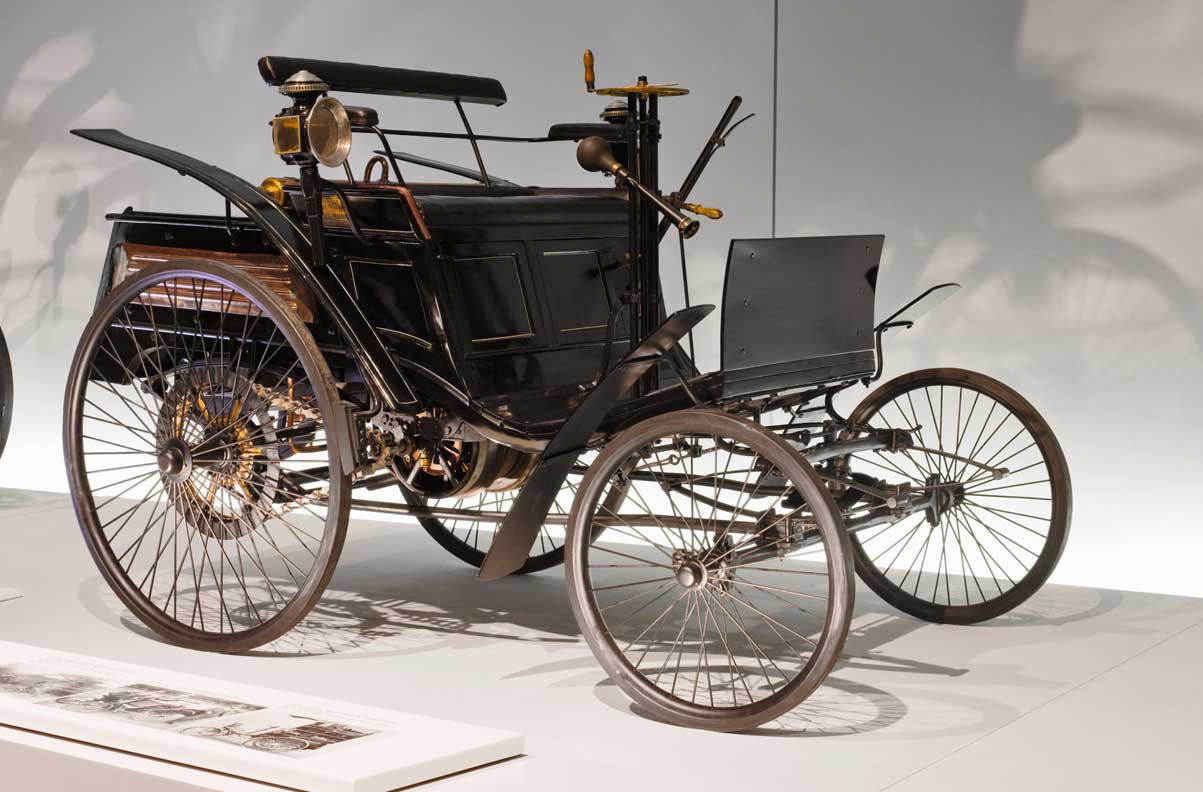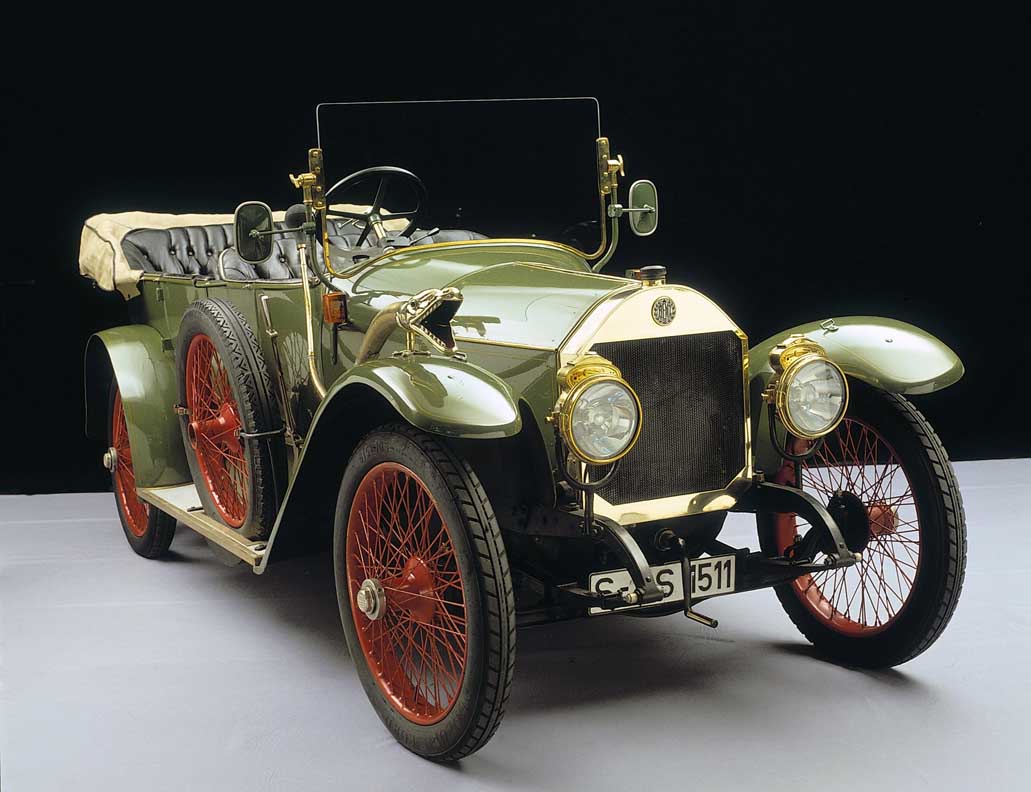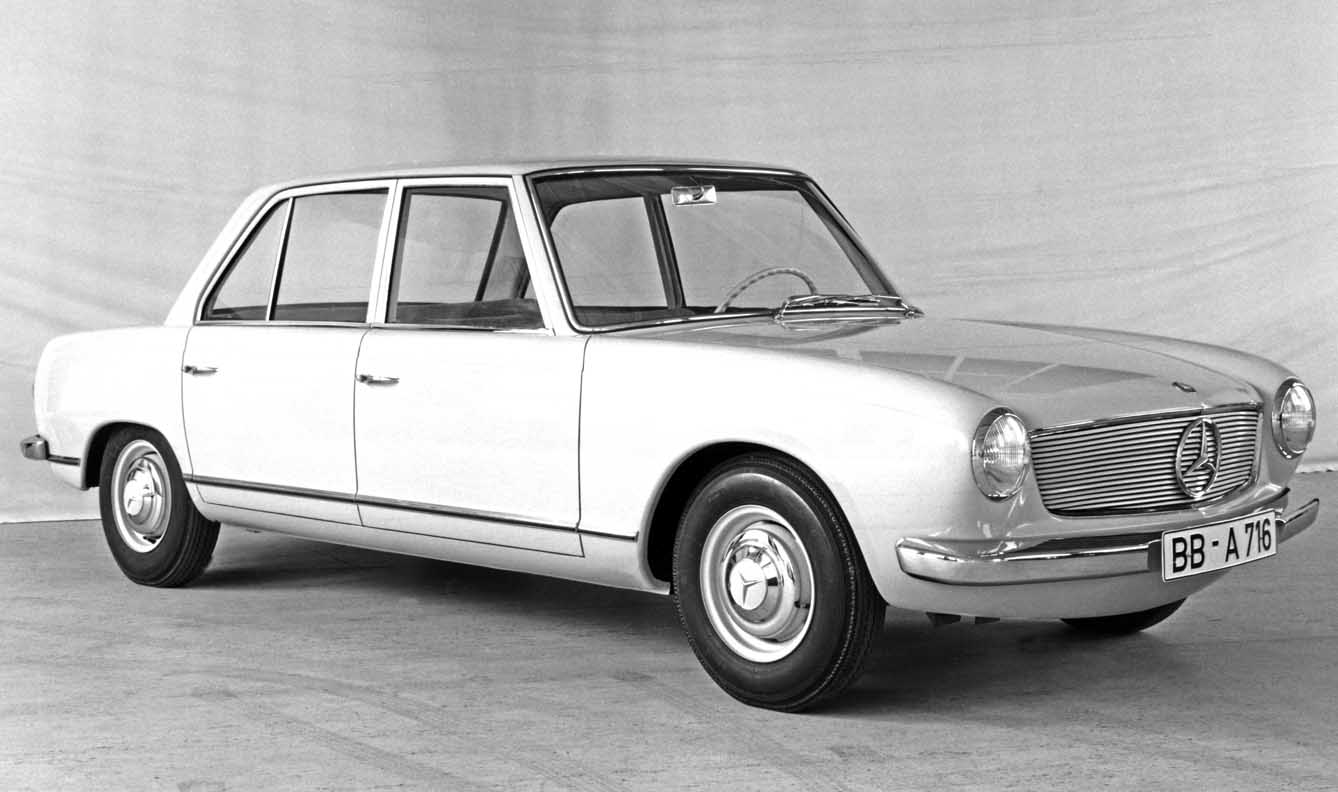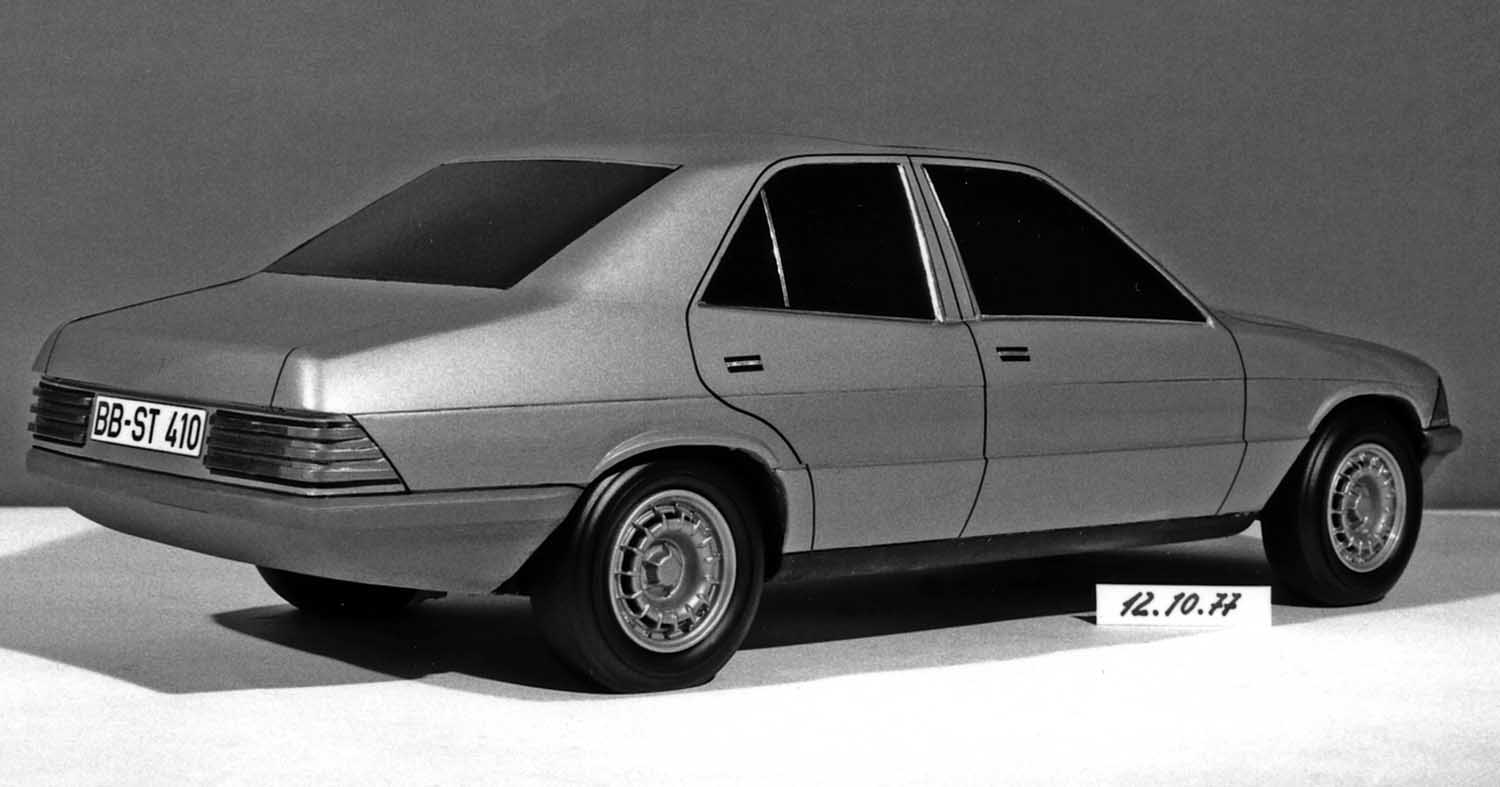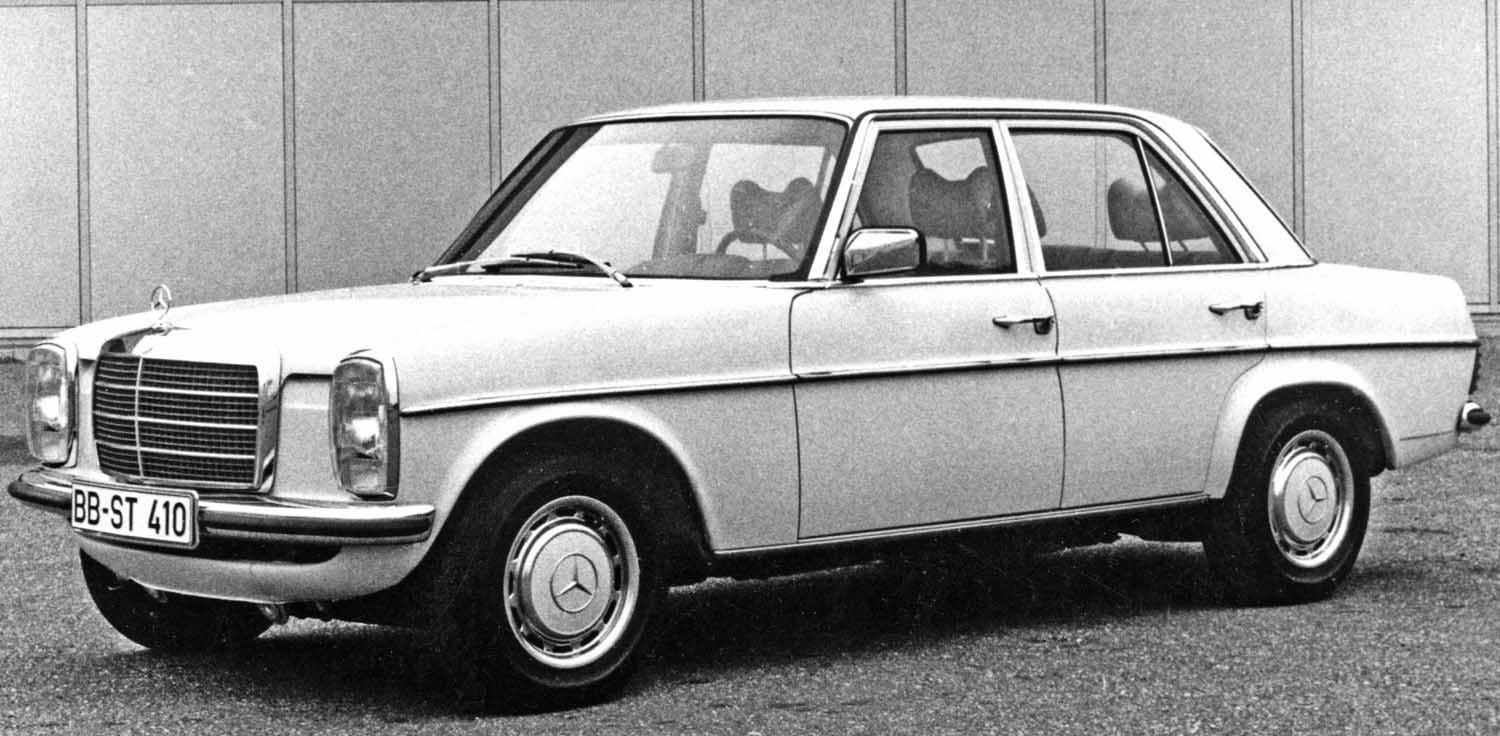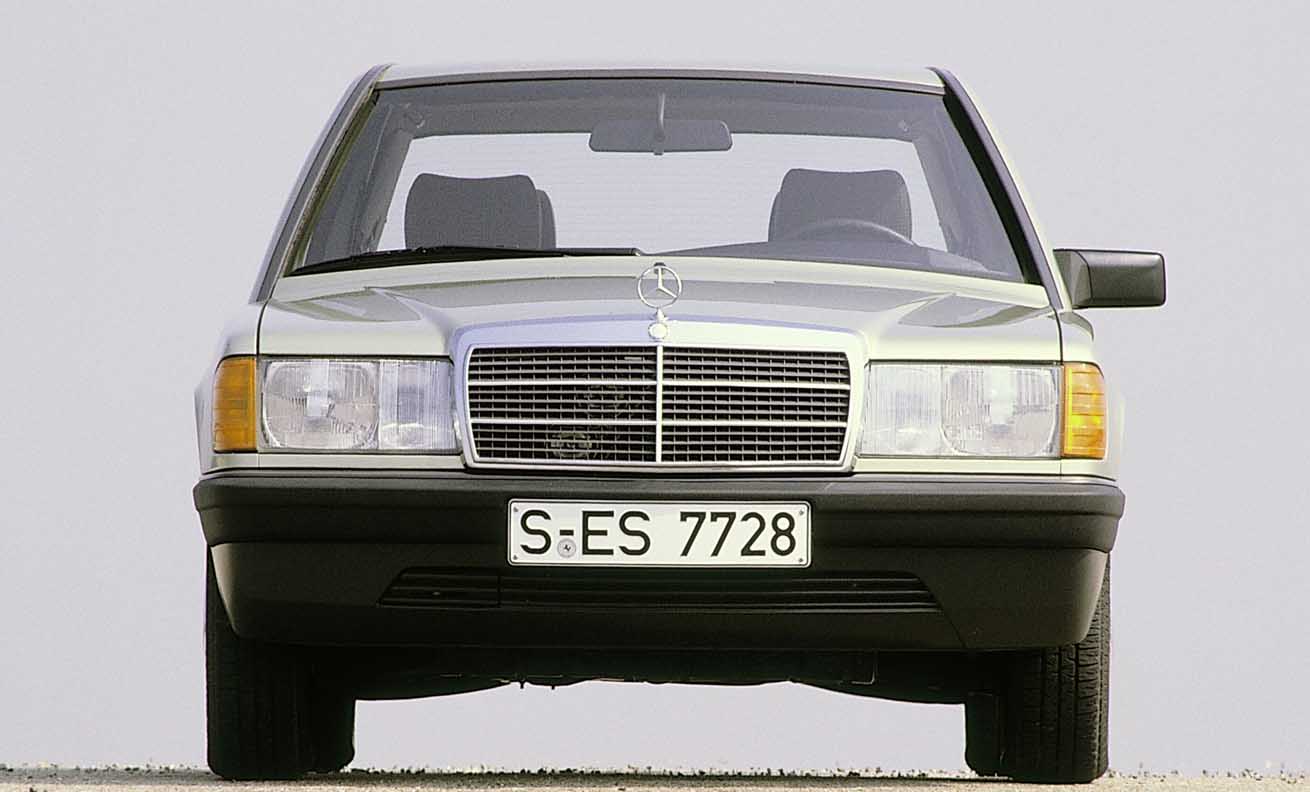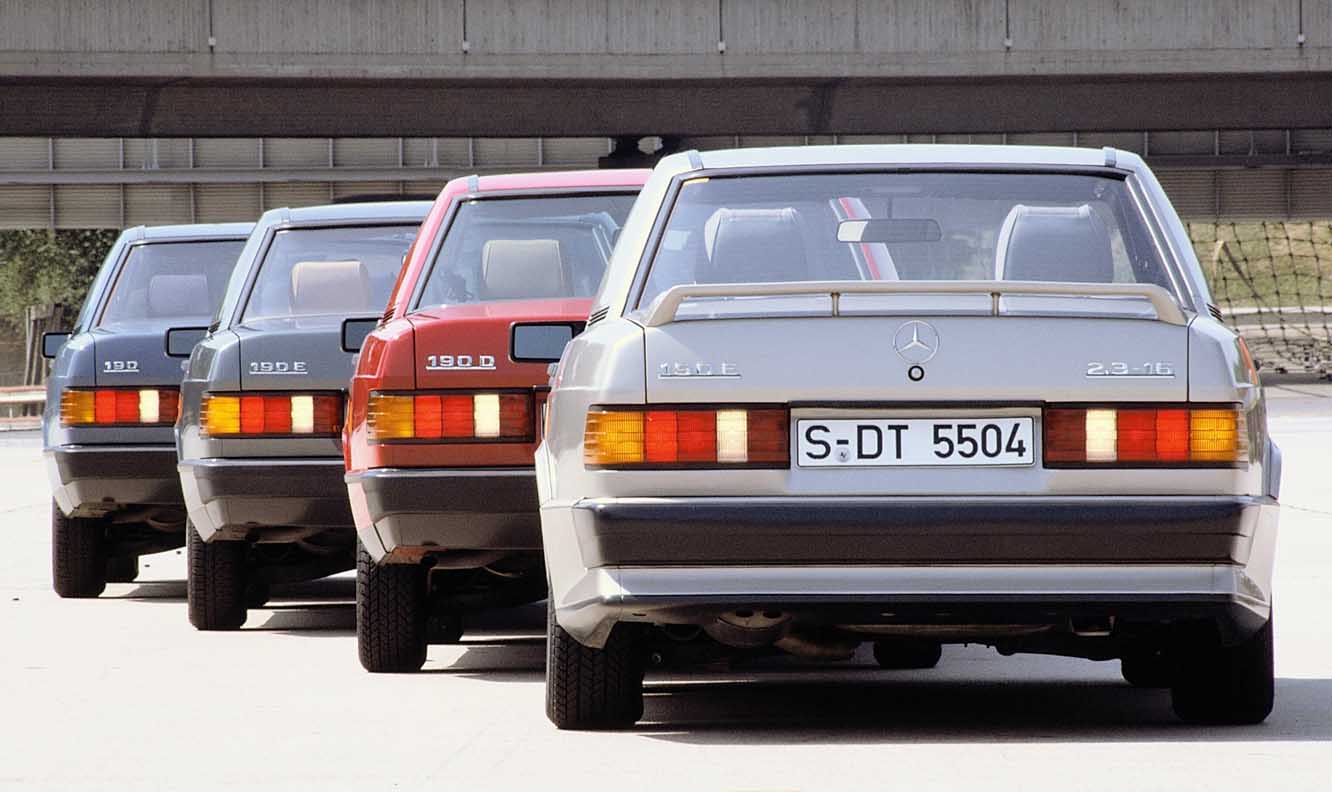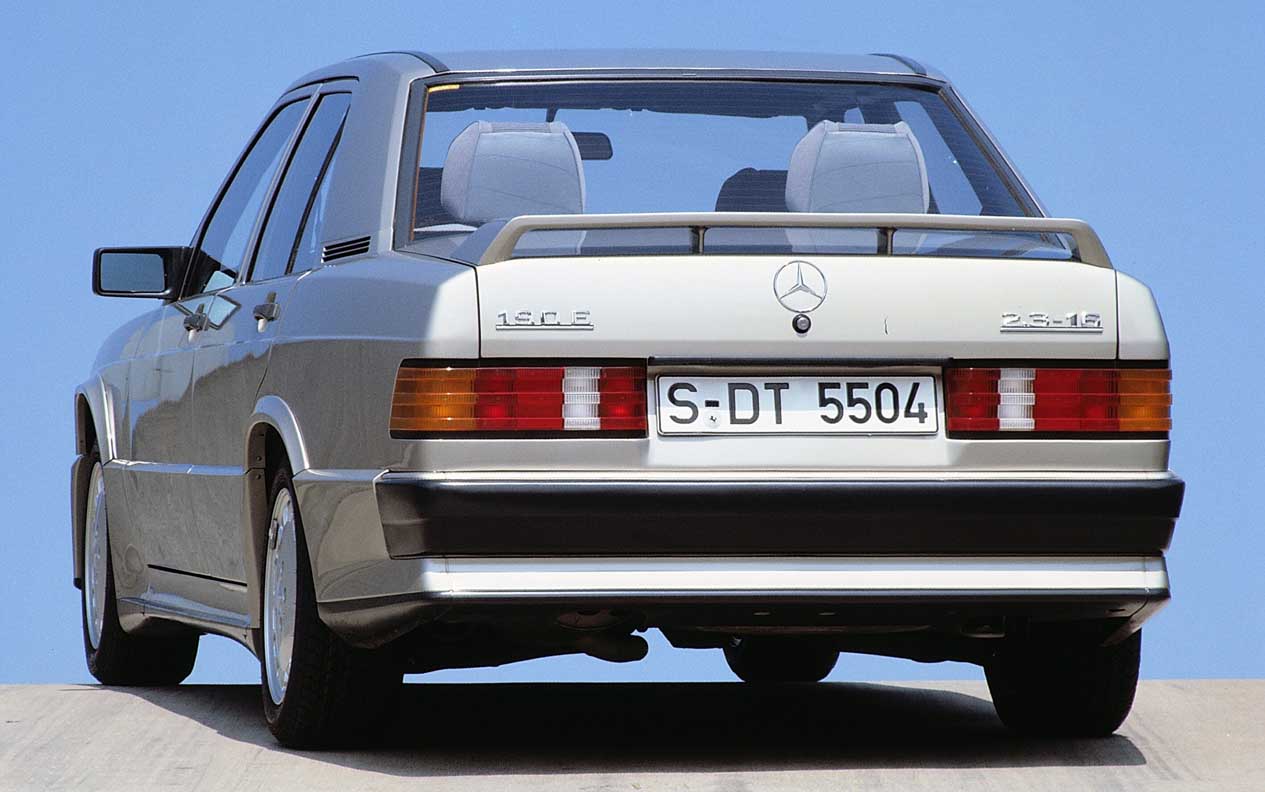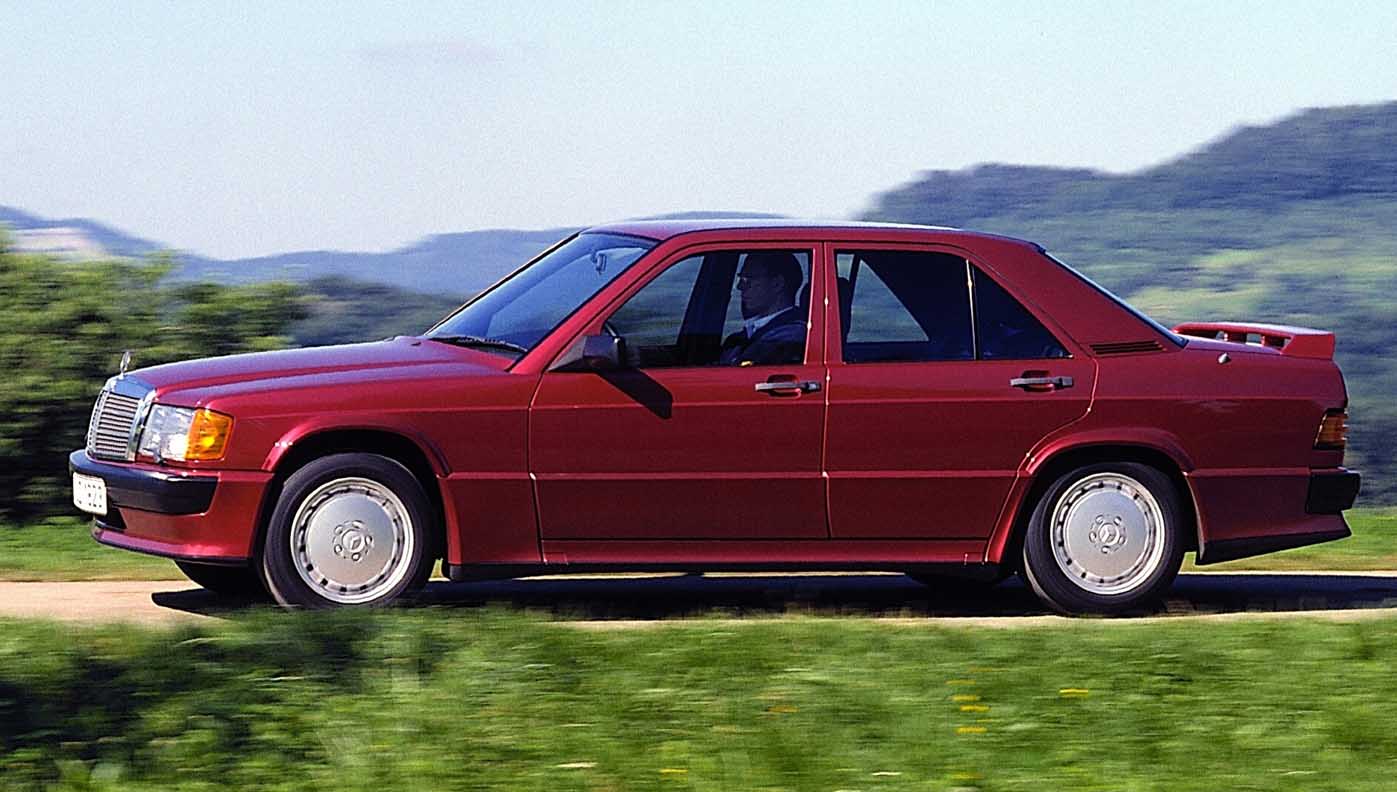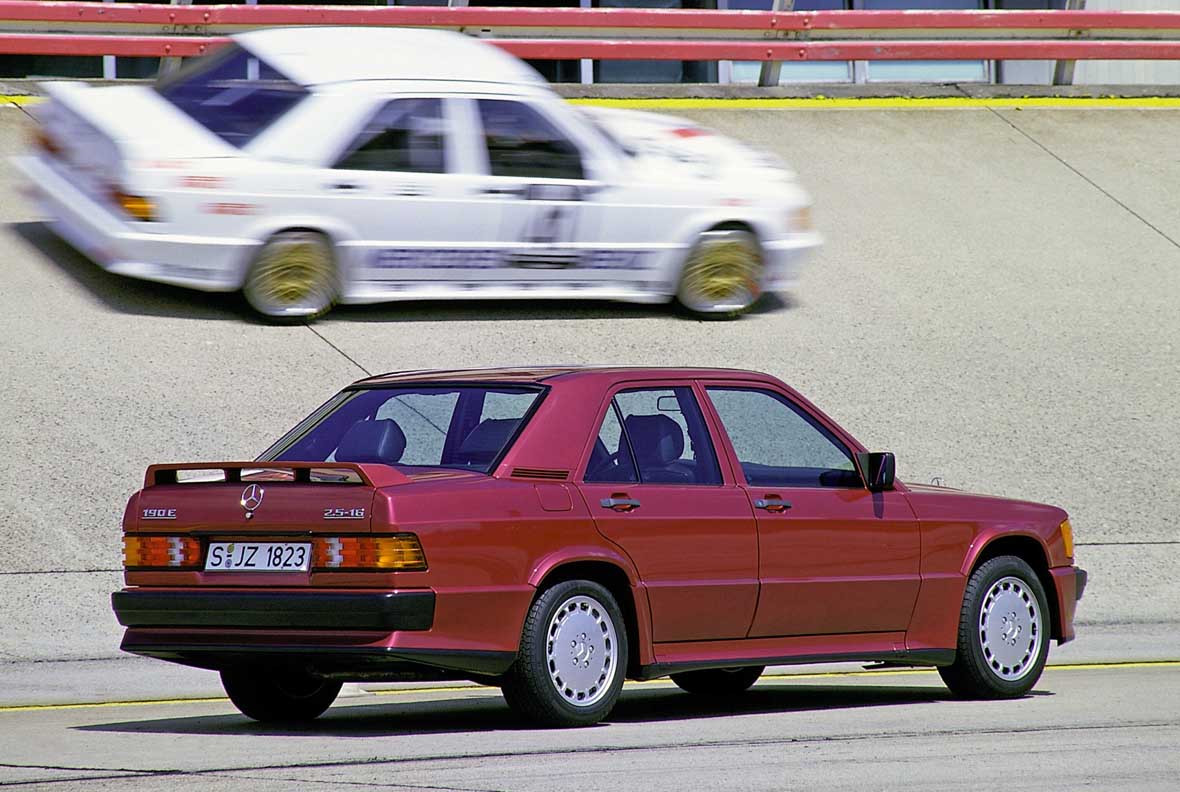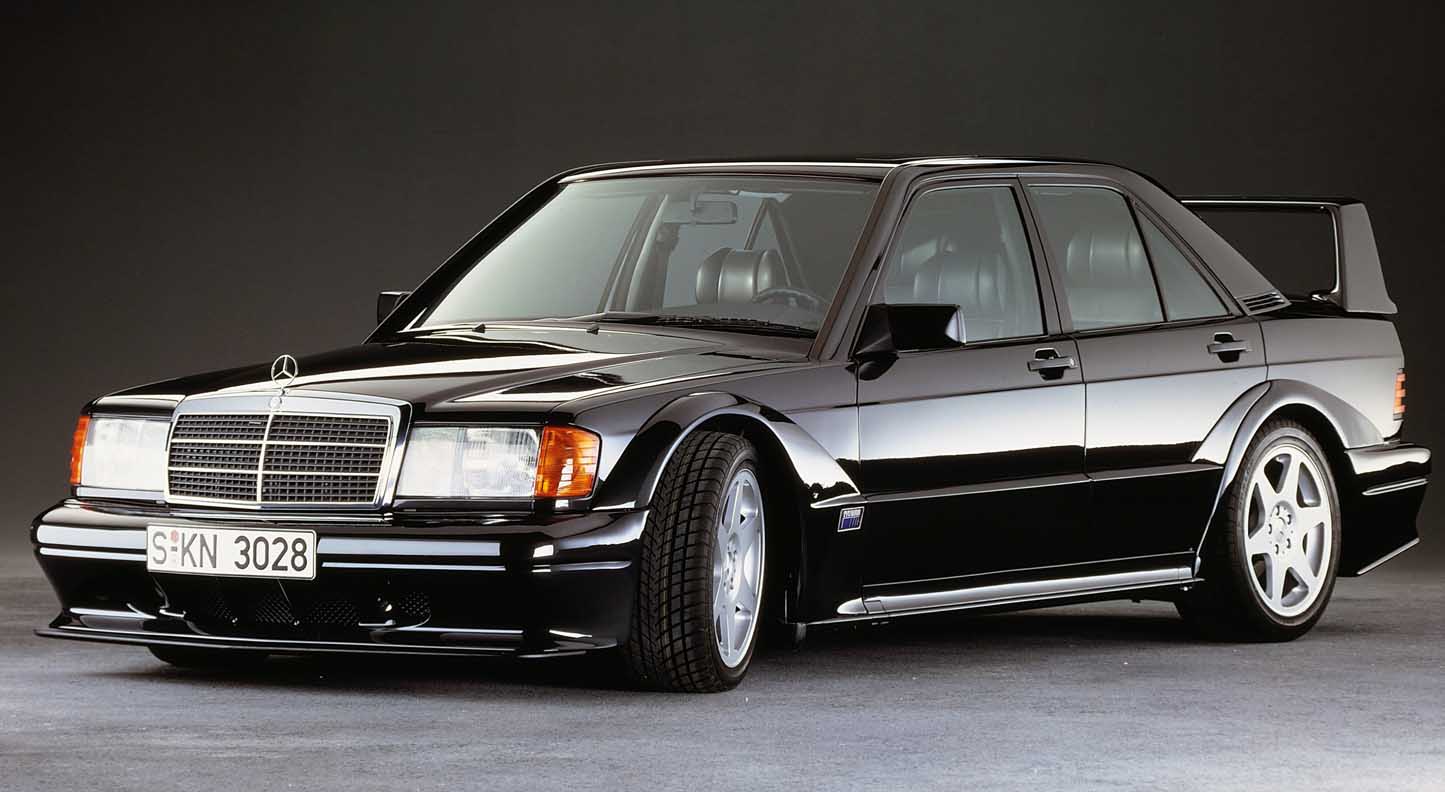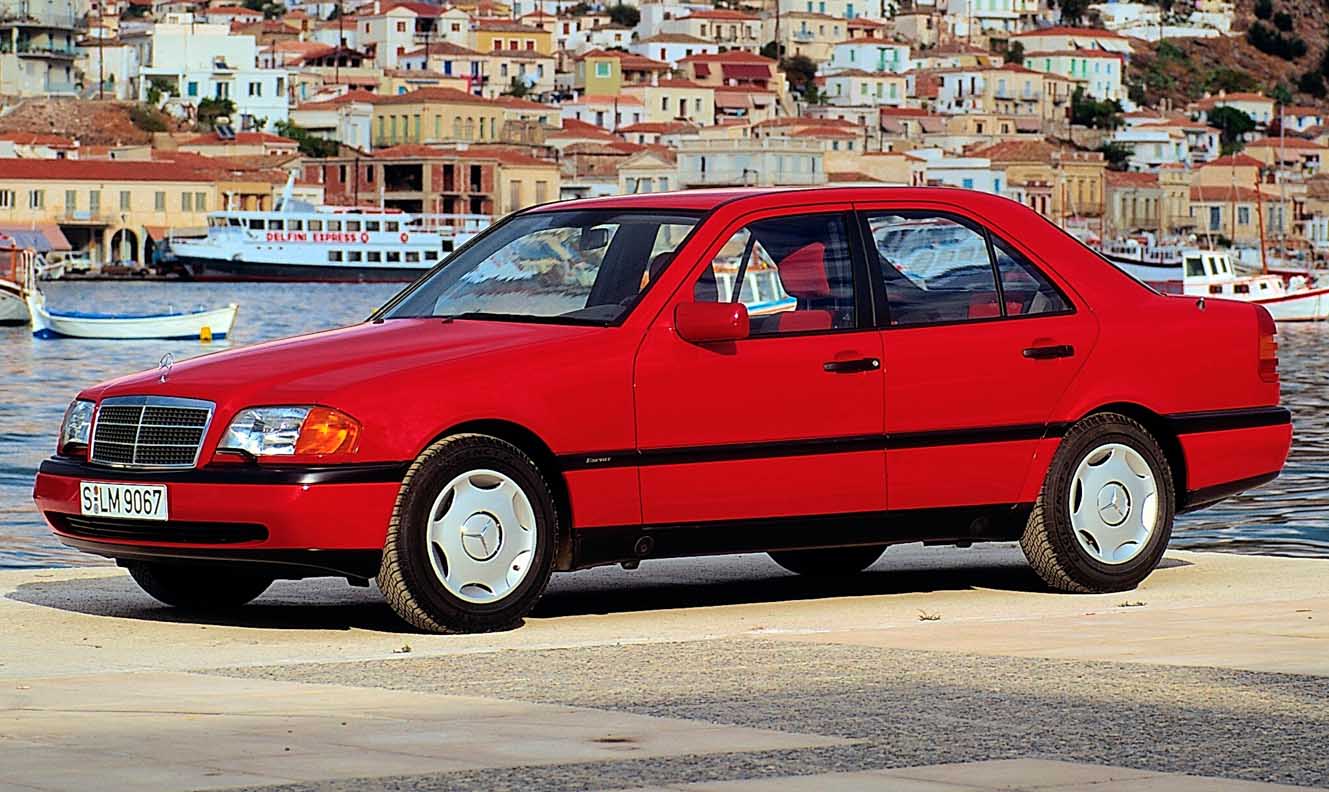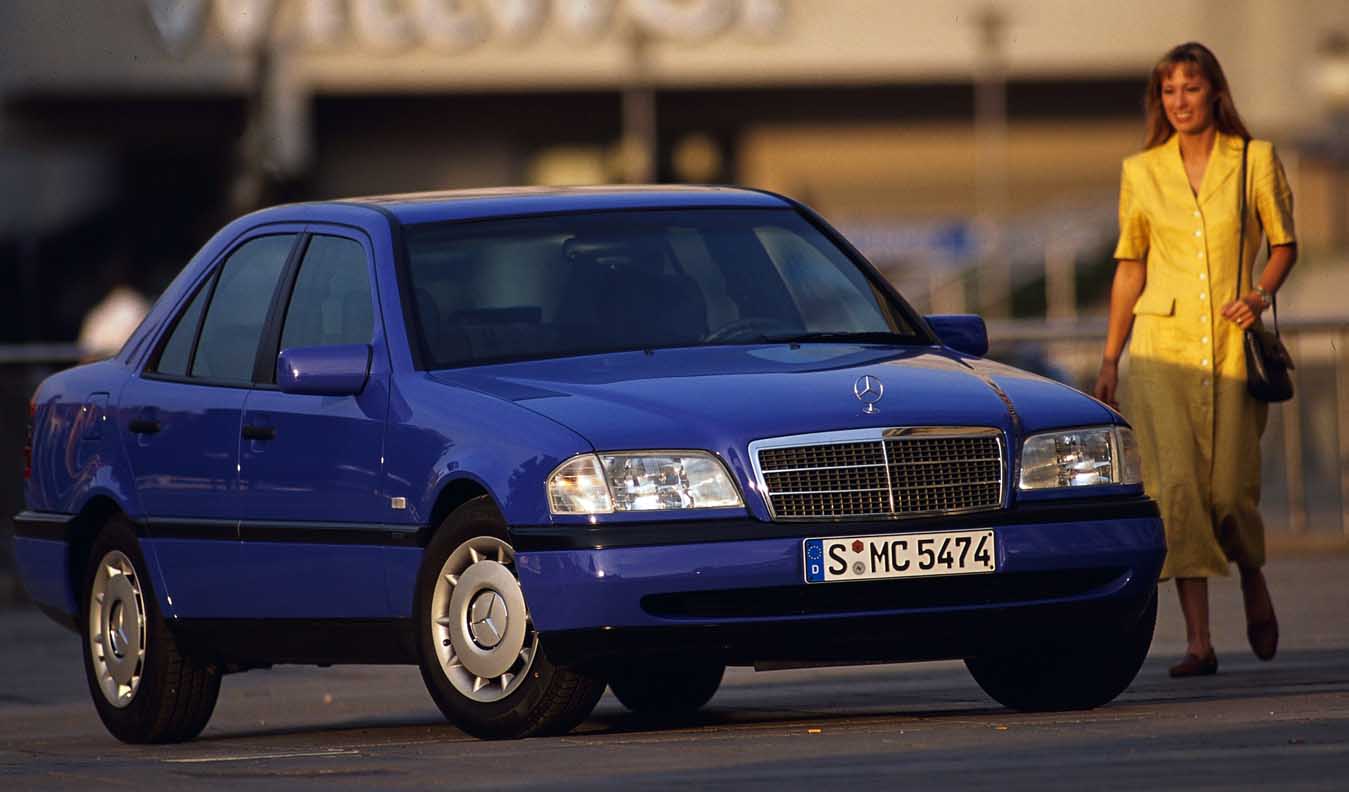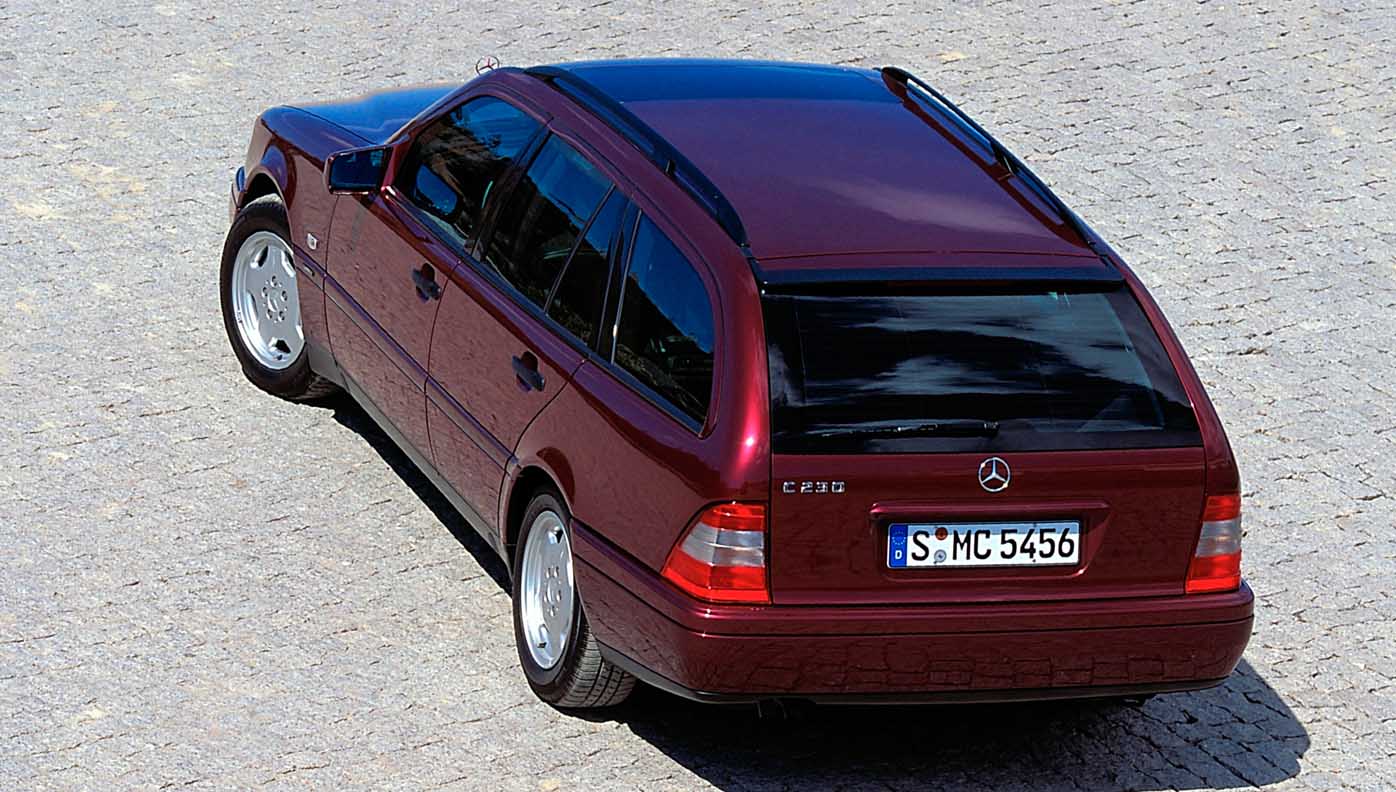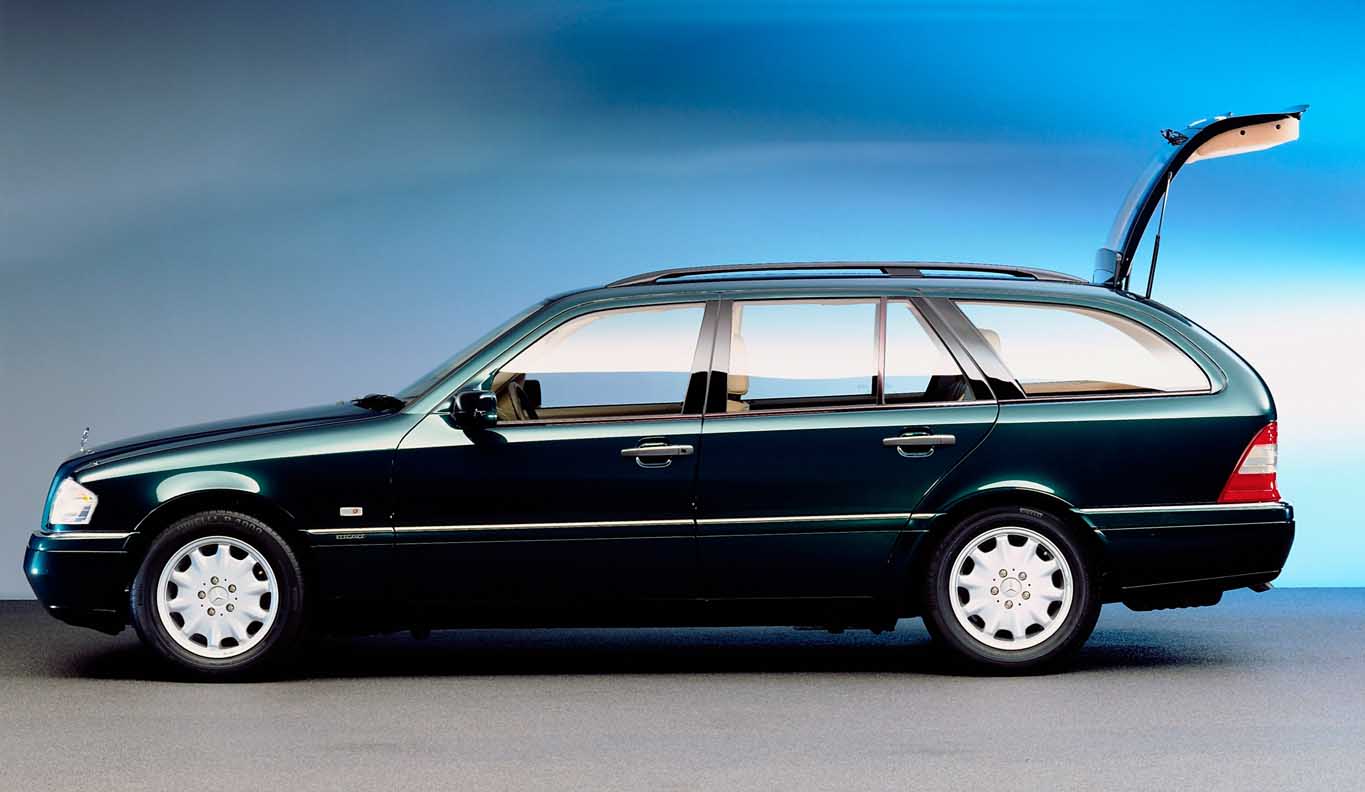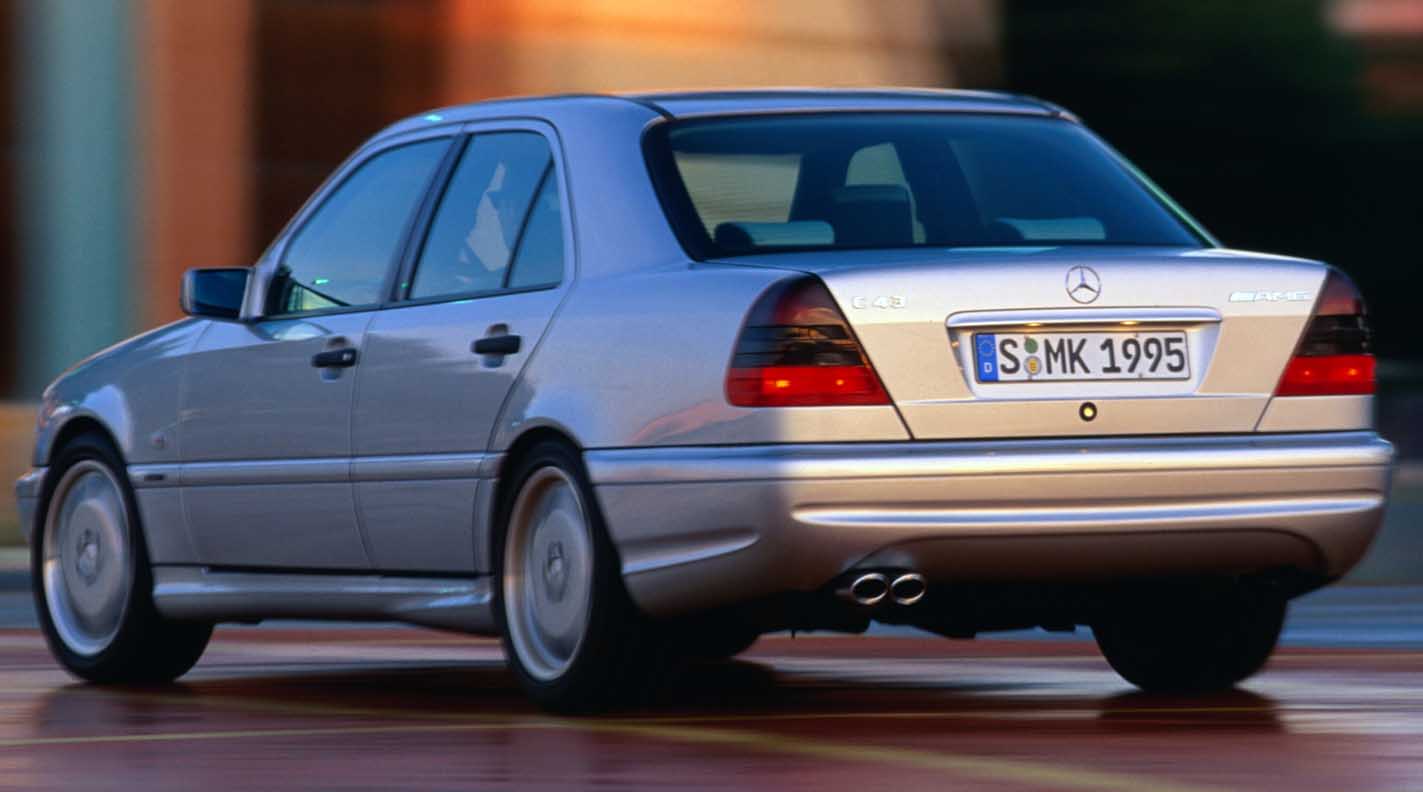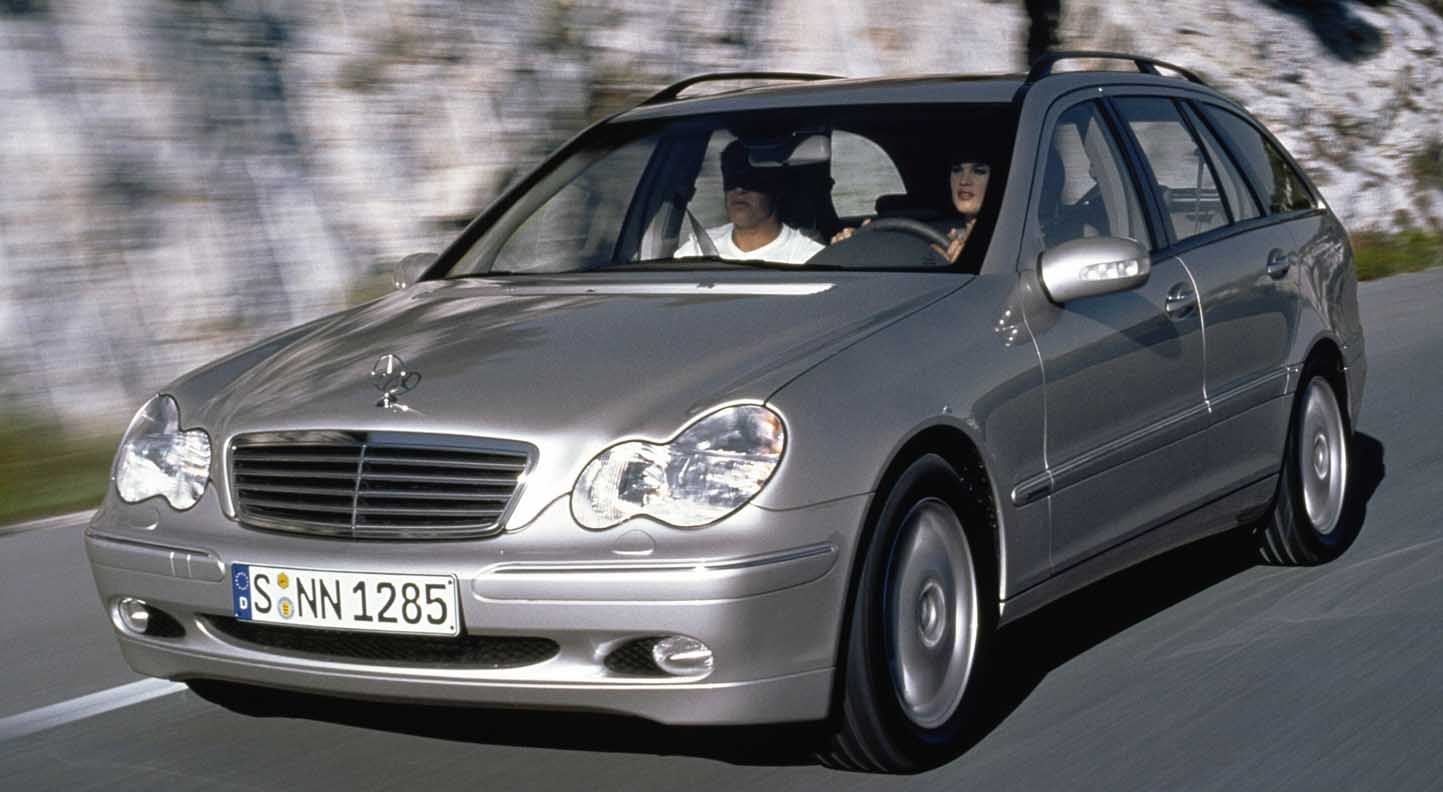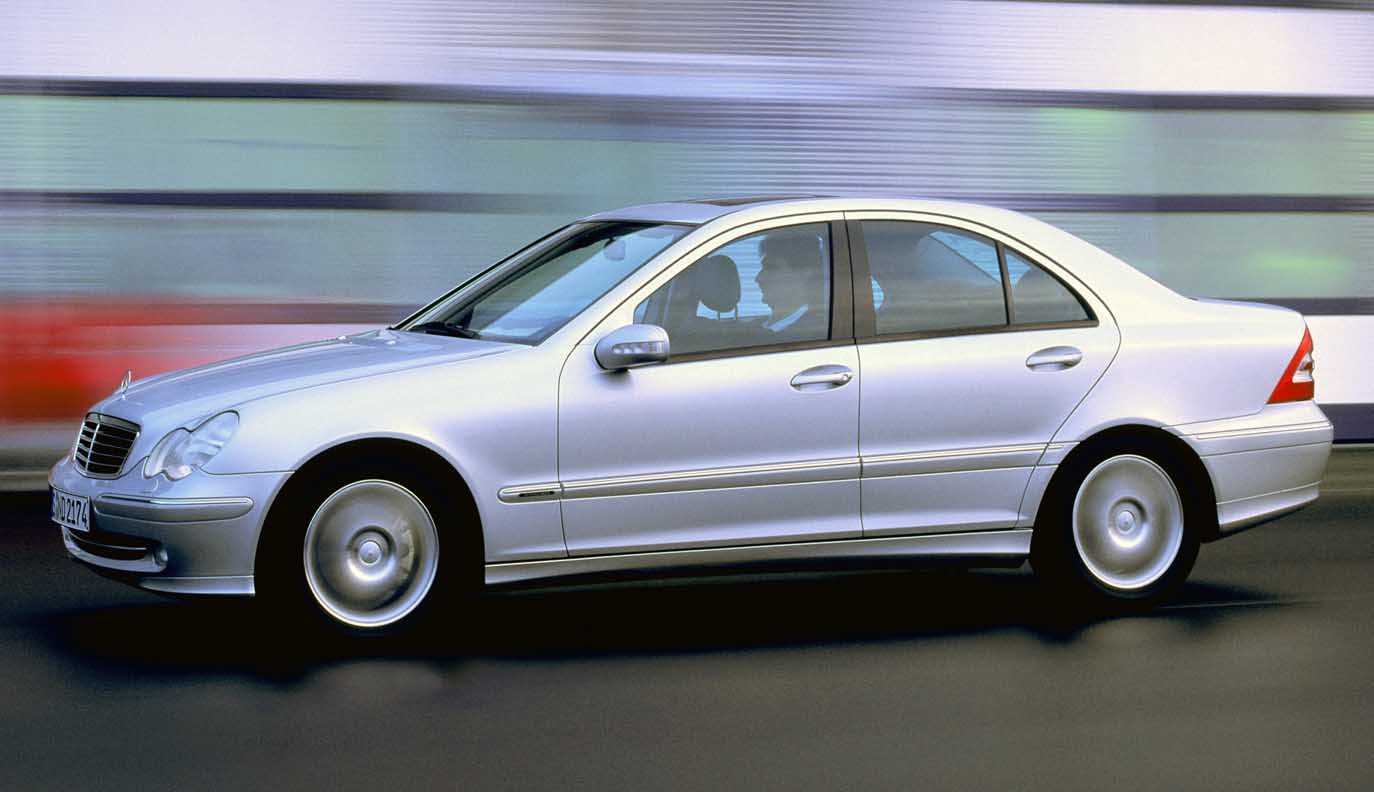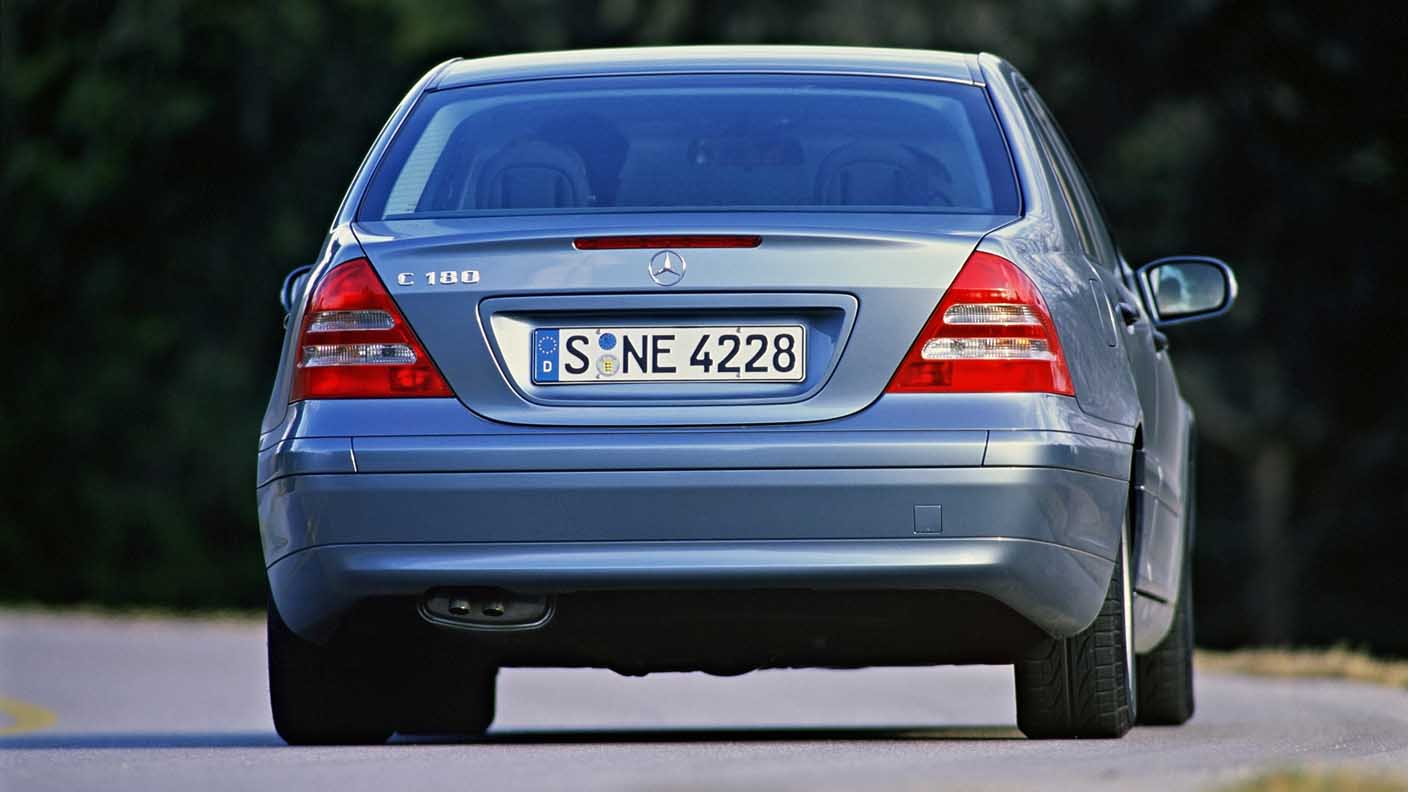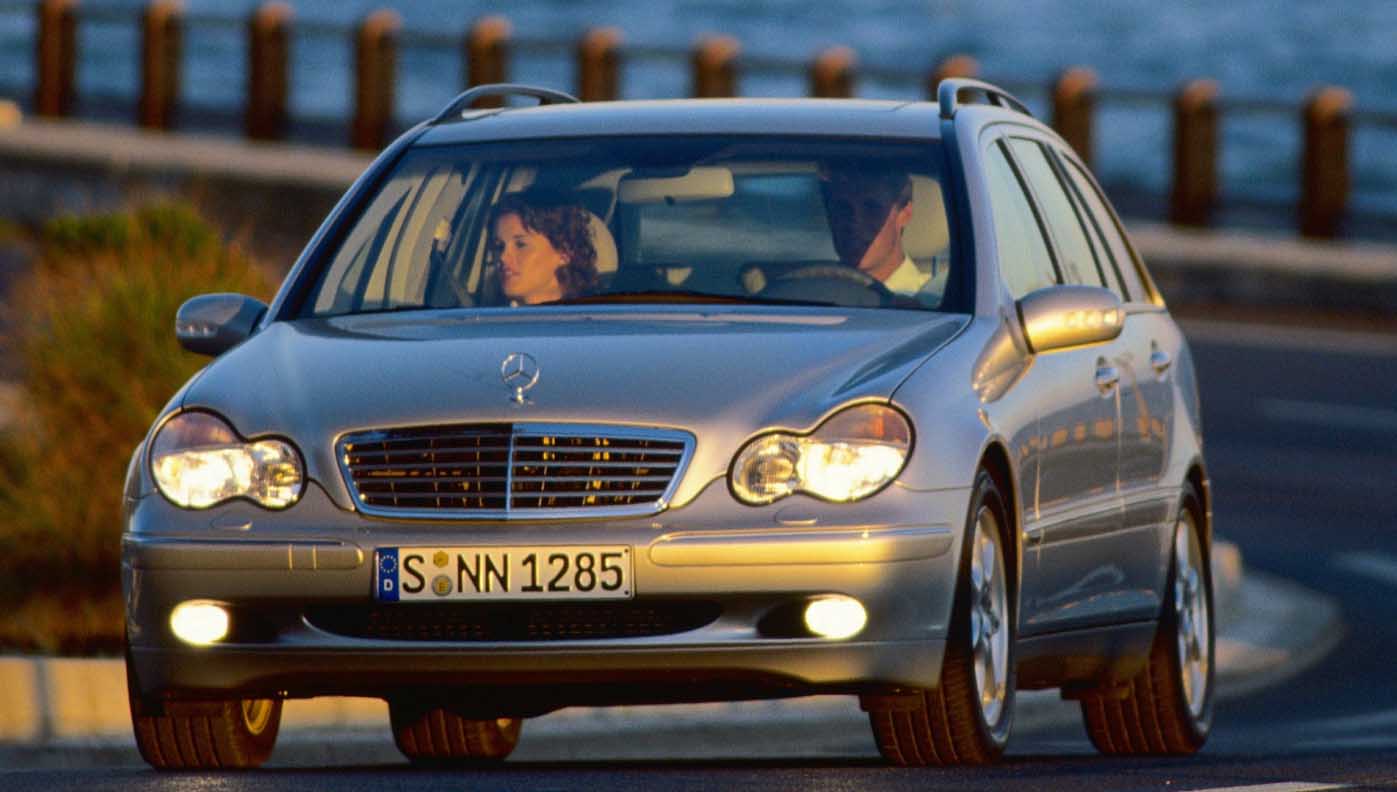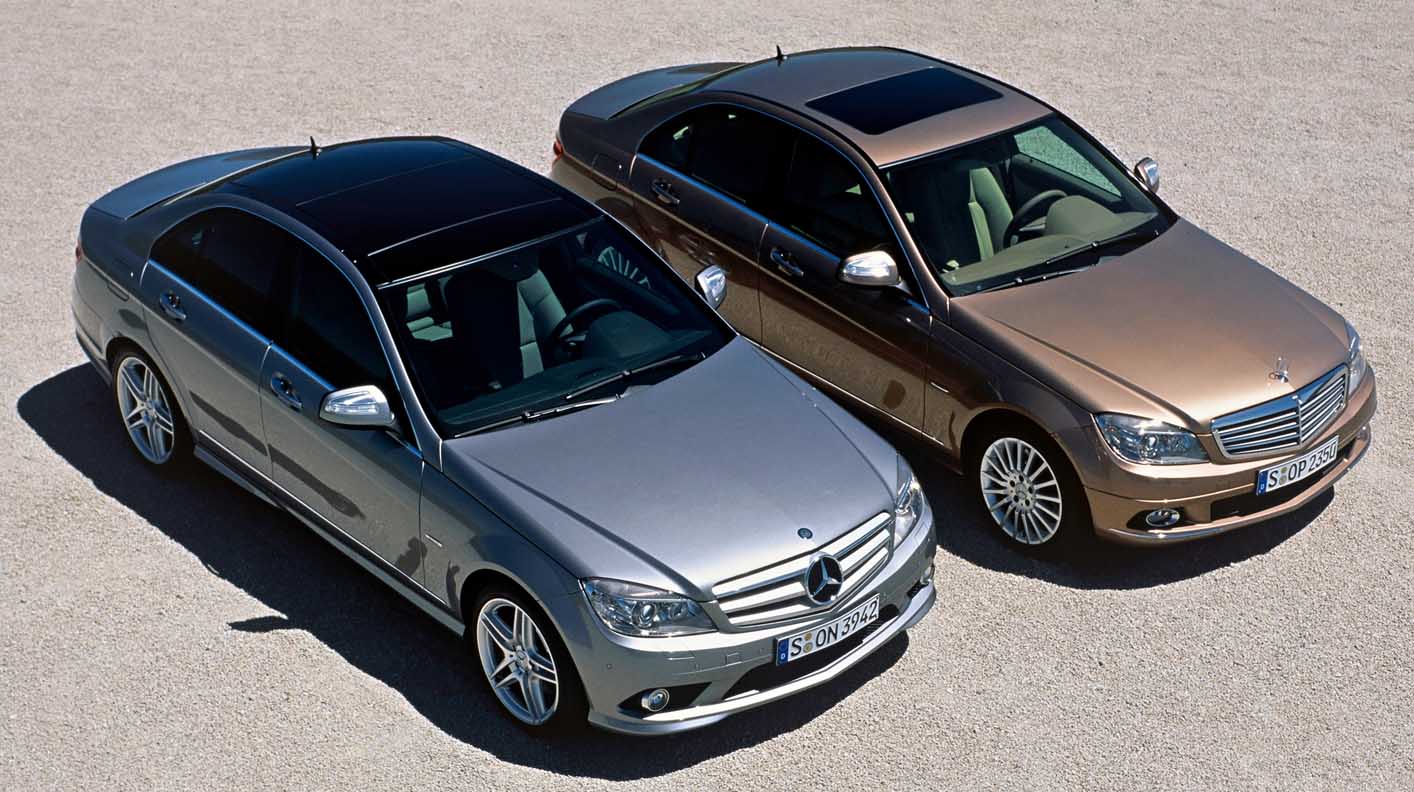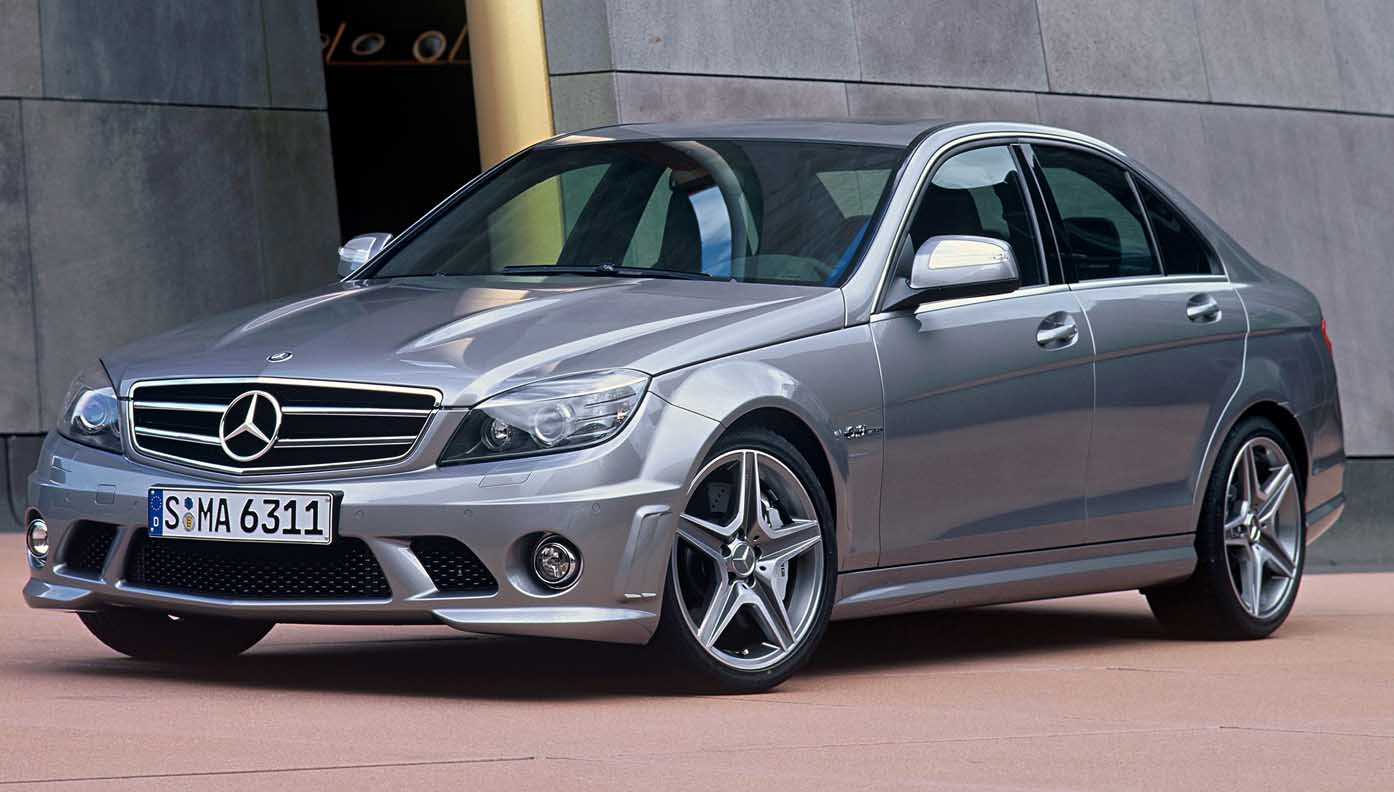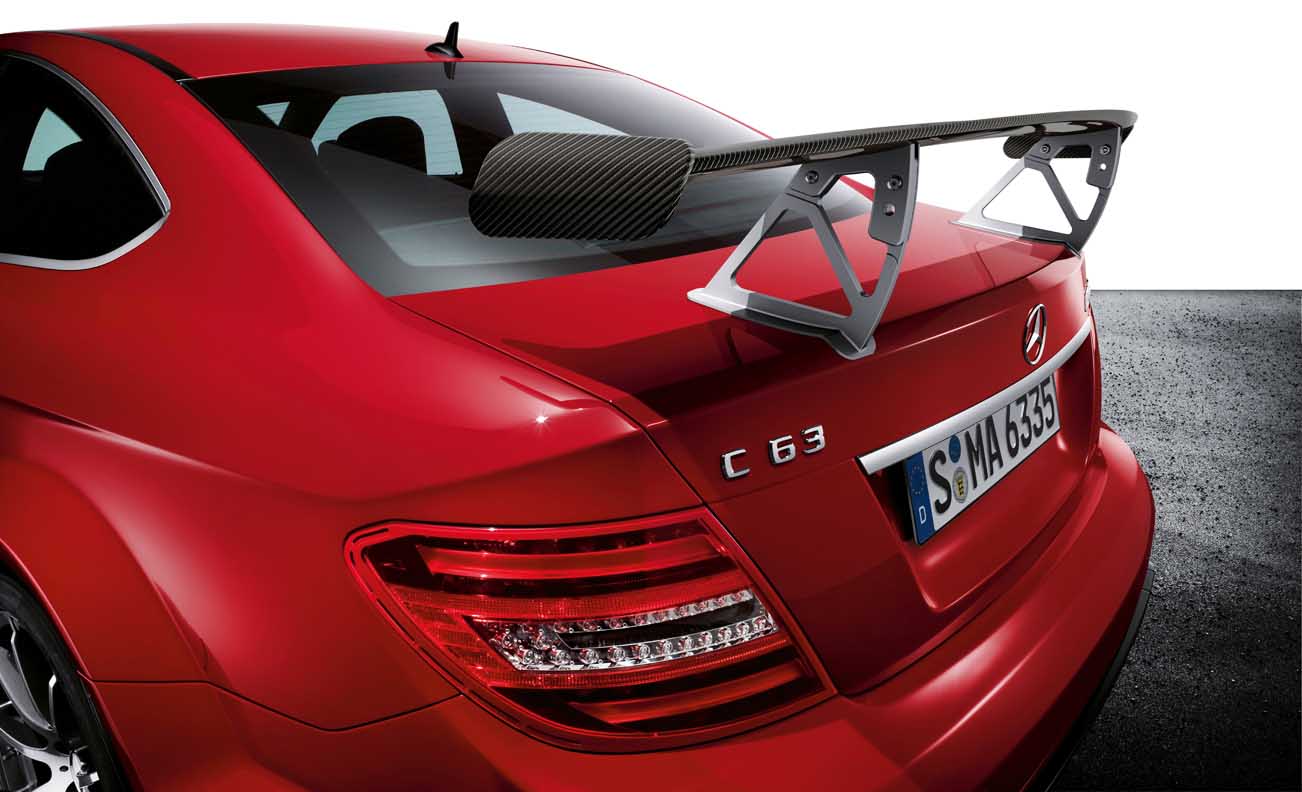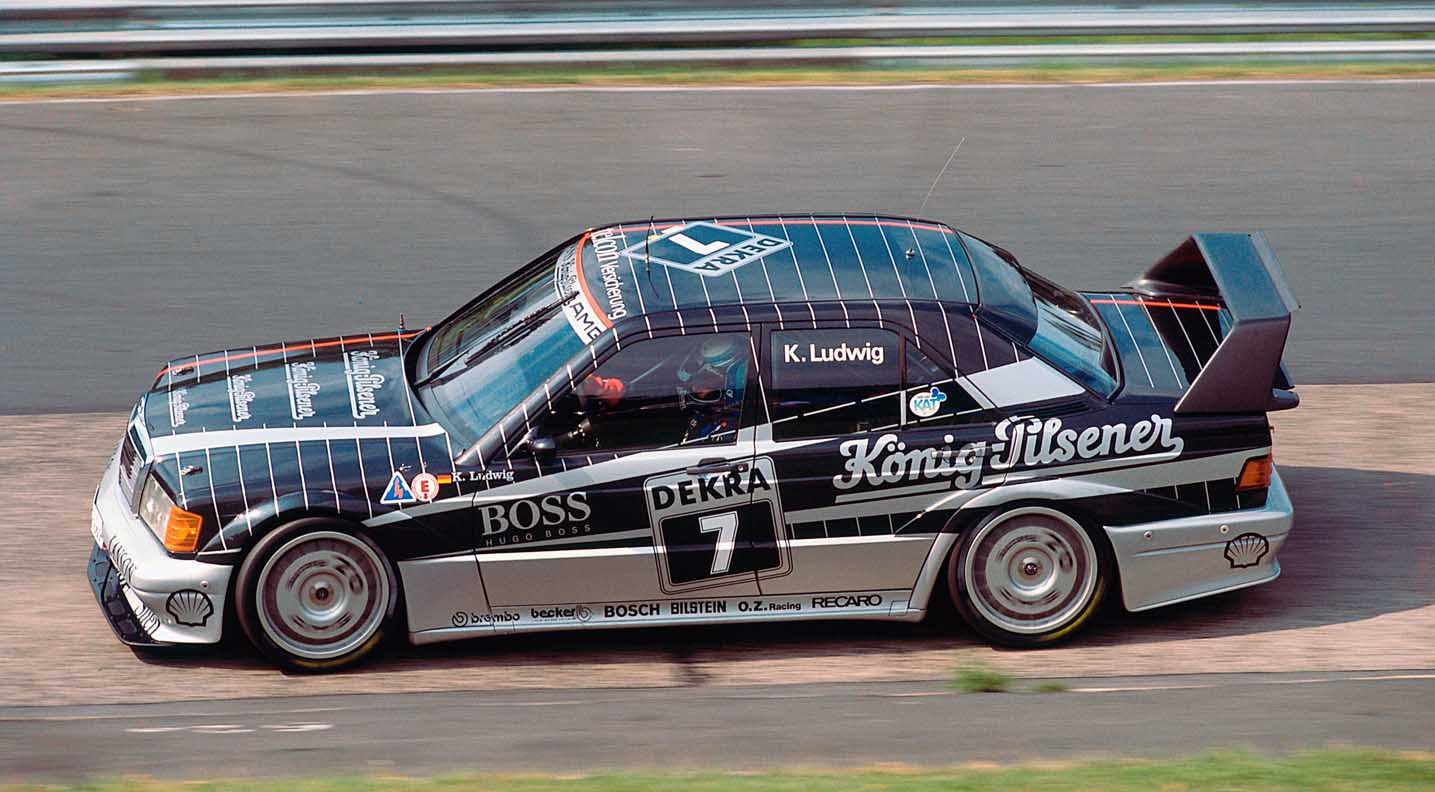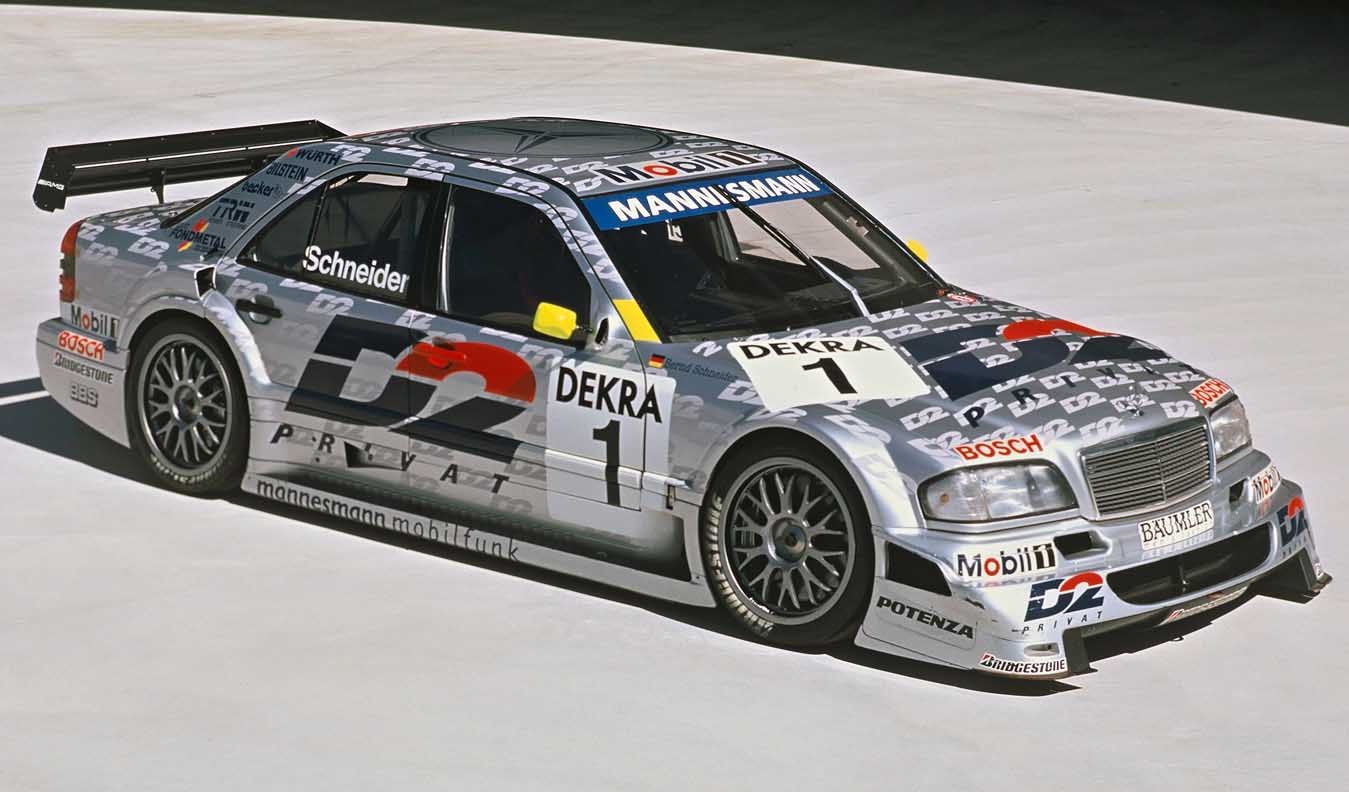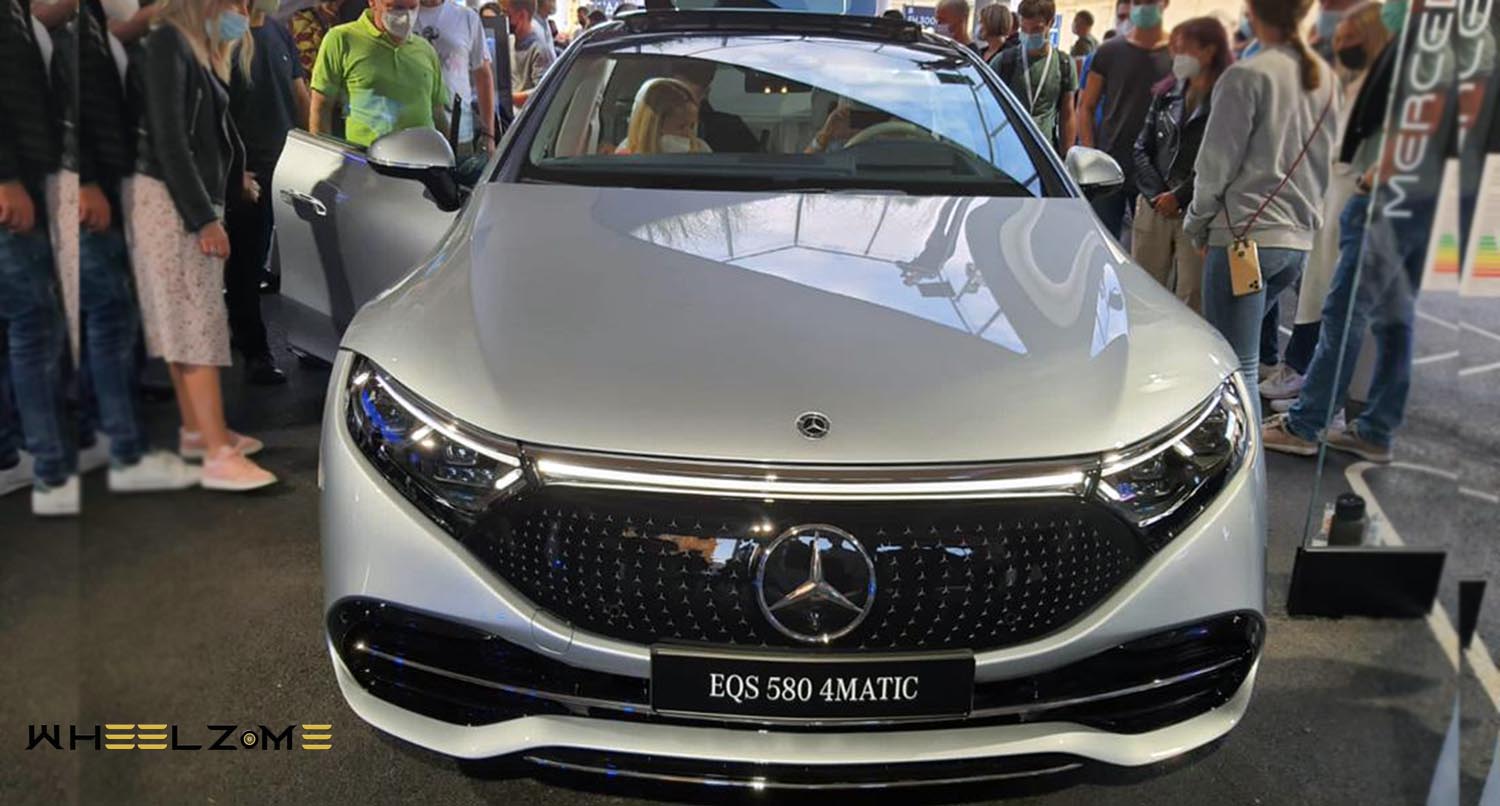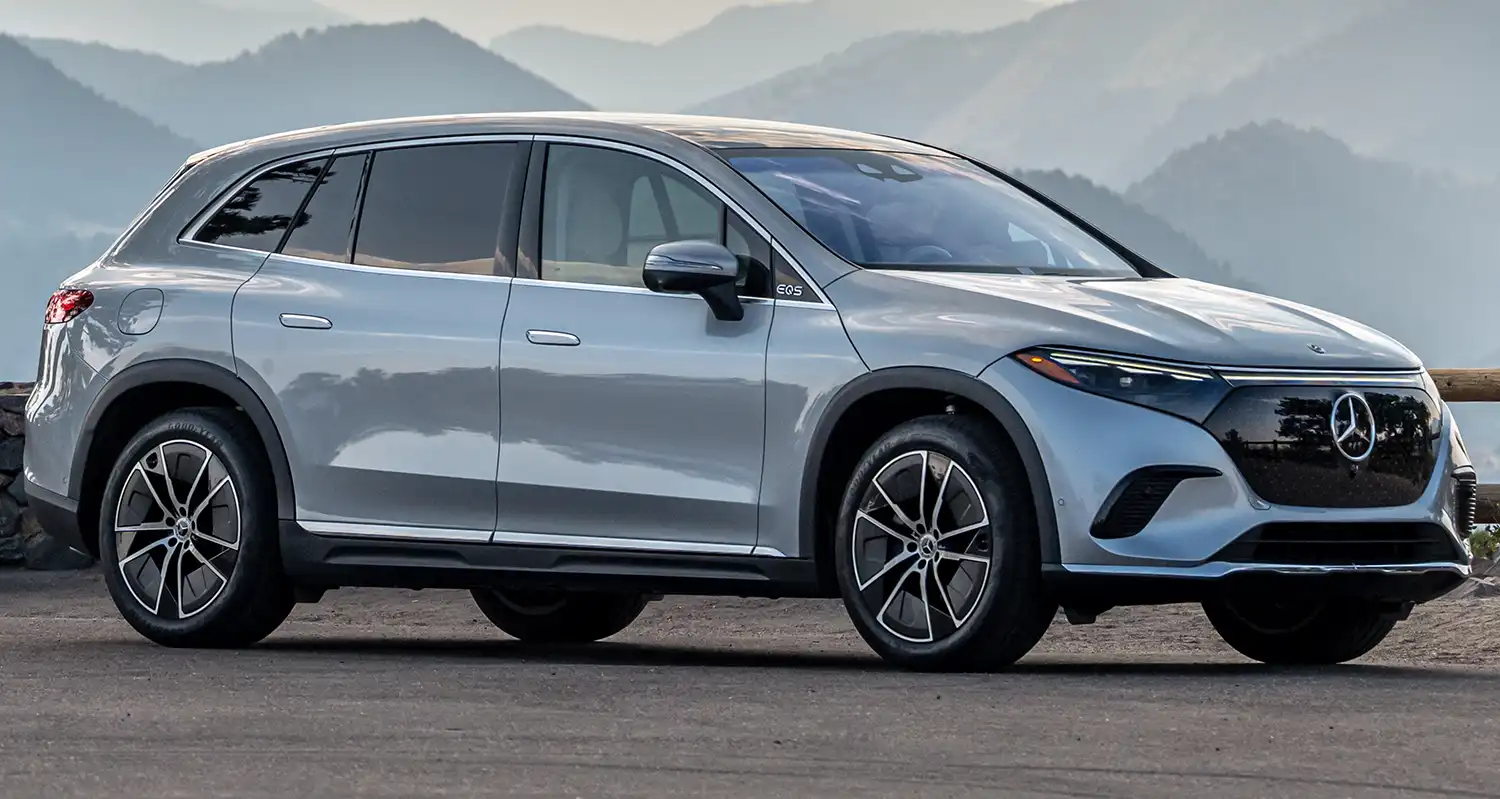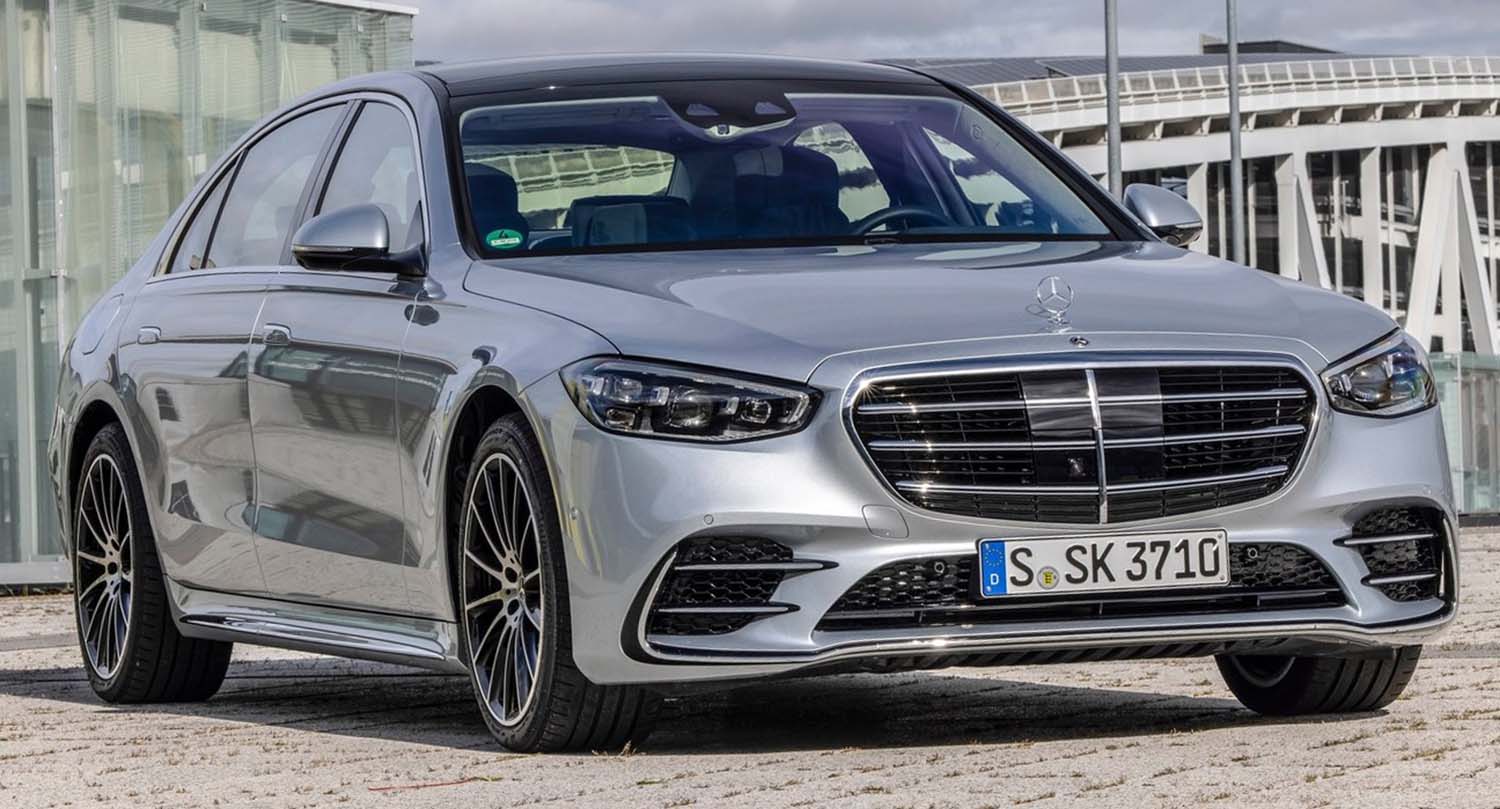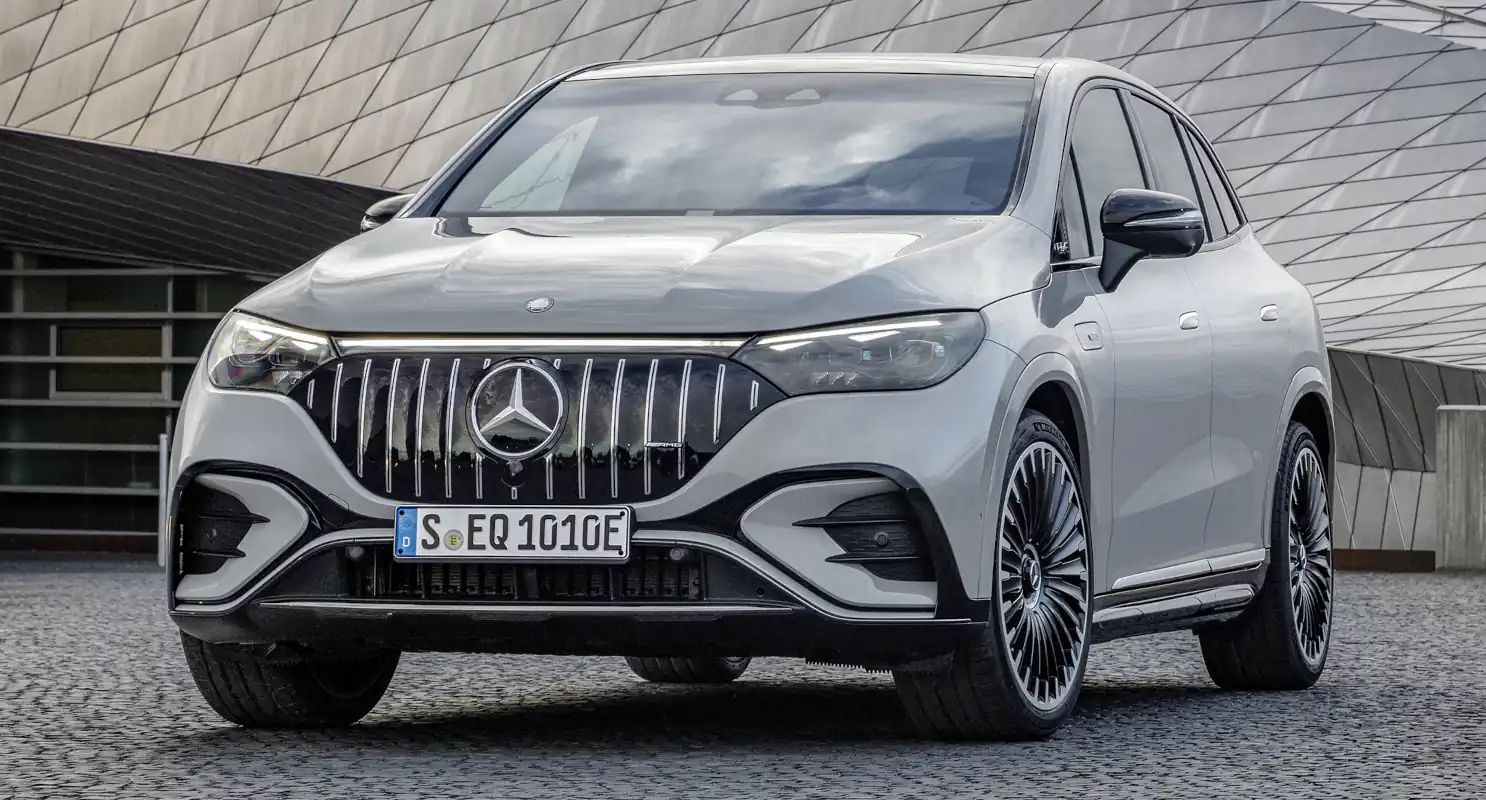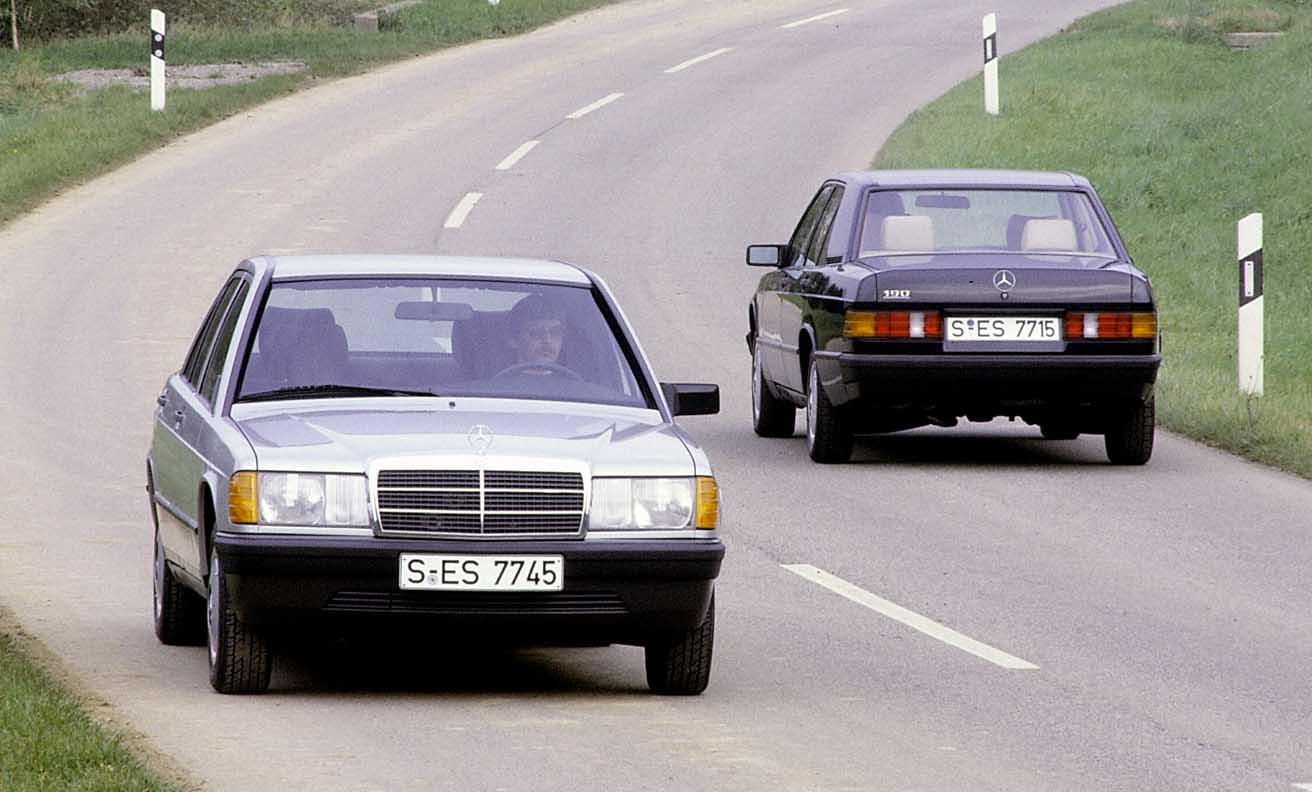
Mercedes-Benz C-Class: Highlights
A model for success: Since the debut of the compact models in 1982, the C-Class has developed into one of the highest-volume model series from Mercedes-Benz thanks to its diversity and innovative technology.
Million seller: Over 10.5 million Mercedes-Benz cars of this class have been built since 1982.
“Baby Benz”: This was what customers from North America first called the W 201 model series because it successfully transferred Mercedes-Benz brand values over to a new market segment.
The “C”: In 1993, in the course of a change in naming conventions, the “Baby Benz” became the C-Class. It was the second Mercedes-Benz model series family after the S-Class to be given such a designation.
Tradition: The Mercedes-Benz heritage of compact cars incorporating innovative technology goes back to the beginnings of motoring history.
A spirit of optimism: The W 201 model series extended the Mercedes-Benz portfolio downwards – an important step for the brand and its strategic product initiative from the mid-1990s onwards.
Powerful: High-performance saloons of the W 201 model series were the basis of race-winning cars in the German Touring Car Championship (DTM) until 1996. From 2004 to 2018, racing touring cars that visually mirrored the respective current C-Class Saloons and Coupés were successful in DTM races.
At home worldwide: Today, the C-Class is produced in Bremen (Germany, lead plant for the model series), East London (South Africa, all right-hand drive versions) and Beijing (China, including the long-wheelbase version of the saloon for that market). In the past, production sites have also included Sindelfingen (Germany), Tuscaloosa (USA) and Juiz de Fora (Brazil).
The triad: The sporty AMG models of the C-Class have been both popular and successful since 1993.
Supercharger: The introduction of a Roots blower in the supercharged C 230 in 1995 (W 202) was reminiscent of the heyday of high-performance Mercedes-Benz cars of the 1920s and 1930s.
Twin headlamps: A new front design with twin headlamps characterised the 203 model series from 2000 on.
Sporty two-door models: This tradition began in 2000 with the C-Class Sports Coupé (CL 203), which was followed by the C-Class Coupé in the 204 model series and the Cabriolet in the 205 model series.
Technology: Every generation in the history of the C-Class has featured innovative technology that has established it in its market segment. Solutions applied in the top Mercedes-Benz models have set standards.
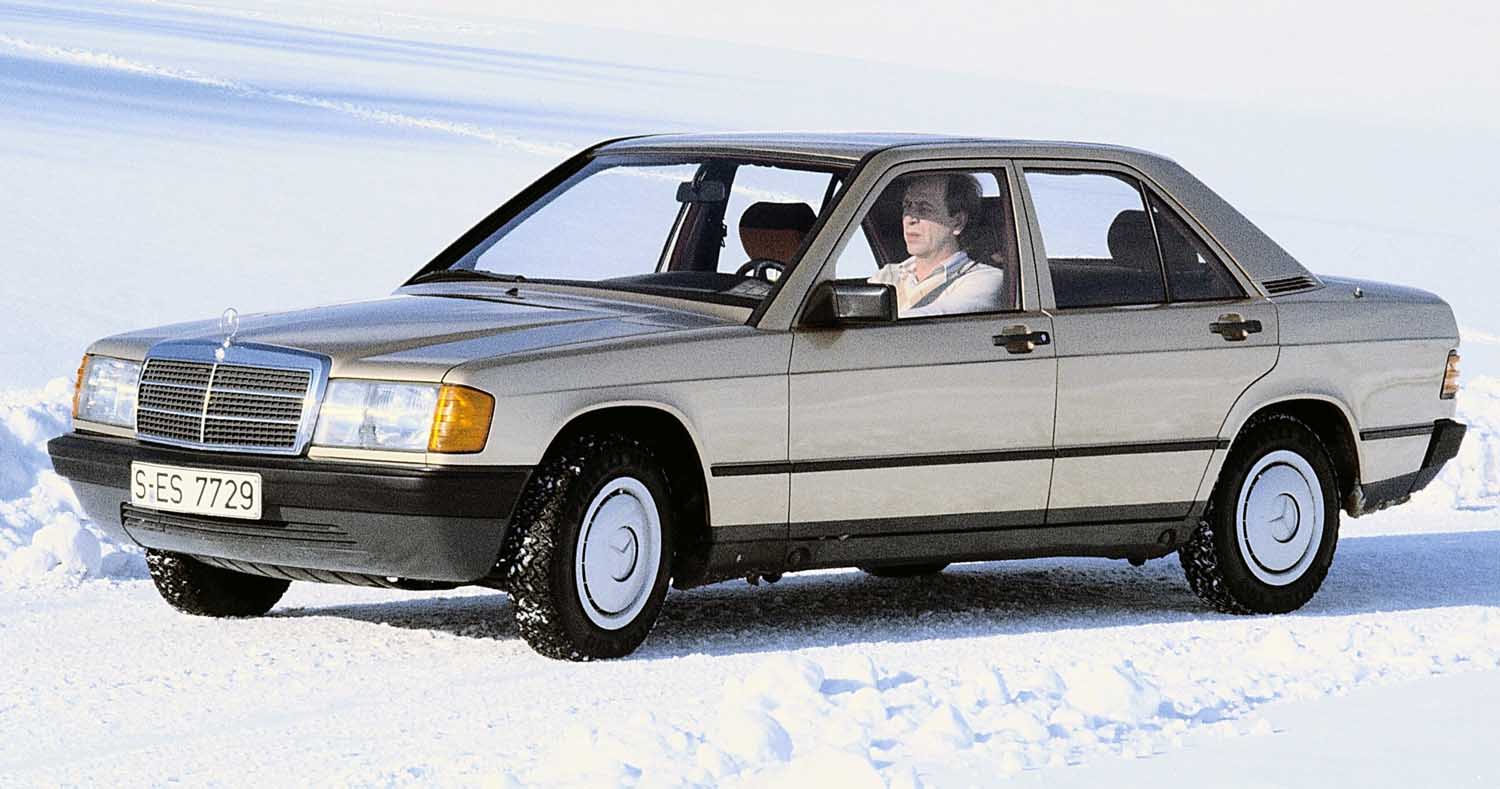
The tradition of the Mercedes-Benz C-Class
The premiere of the Mercedes-Benz compact models in 1982 set the course for a doubly successful future: it marked the beginning of the direct line of C-Class tradition. It also provided the impetus for the brand’s general departure into its strategic product initiative. This strategy transformed classic luxury-class manufacturer Mercedes-Benz into a modern, broad-based premium brand. This development had its roots back in the early days of the car.
With its Saloon, Estate, Coupé and Cabriolet models, the Mercedes-Benz C-Class today is as versatile as it is successful. The model series family is complemented by the all-electric EQC, the GLC and the GLC Coupé. The strong history of the model series family, which was initially launched on the market almost 40 years ago as a compact model class, began with a minor revolution: the 190 and 190 E models of the W 201 model series complemented the established luxury and premium model series (S-Class) as well as the upper medium-size category (which later became the E-Class) with an intelligently designed and more compact saloon.
Vehicles with compact exterior dimensions and state-of-the-art technology had existed in the history of Mercedes-Benz since before the W 201 model series. The tradition of these designs and production vehicles went right back to the early days of the car. In crafting these cars, the engineers, developers and designers successfully transferred their expertise to segments below the upper medium-size category, luxury and premium classes. A few examples illustrate the diversity of this development.
Compact cars at Benz & Cie. and Daimler-Motoren-Gesellschaft
Just eight years after the invention of the car, Carl Benz designed the Velo, which was launched in 1894. Its lightweight construction and compact dimensions were impressive, and it became the first mass-produced vehicle in automotive history. In an internal competition for a compact vehicle, Benz & Cie. created the Benz 8/18 hp in 1911. In the same year, the then Daimler-Motoren-Gesellschaft (DMG) presented its Mercedes 8/18 hp. DMG responded to the increasing demand for more favourably priced cars in the 1920s with the innovative 6/25 hp supercharged passenger car.
New developments at Mercedes-Benz
At Daimler-Benz AG, which was created by the merger in 1926 with the new Mercedes-Benz brand, work continued on innovative and compact cars. The results included the Mercedes-Benz 170 (W 15, 1931), the rear-engined models 130 (W 23, 1934) and 170 H (W 28, 1936) and the highly successful Mercedes-Benz 170 V (W 136, 1936). After the Second World War, important designs for compact passenger cars were created – in particular, the W 122 model series in the 1950s and the W 118 and W 119 model series in the 1960s. The decision to develop the compact models was finally taken in the 1970s, which was when the W 201 model series was born, which was launched on the market in 1982.
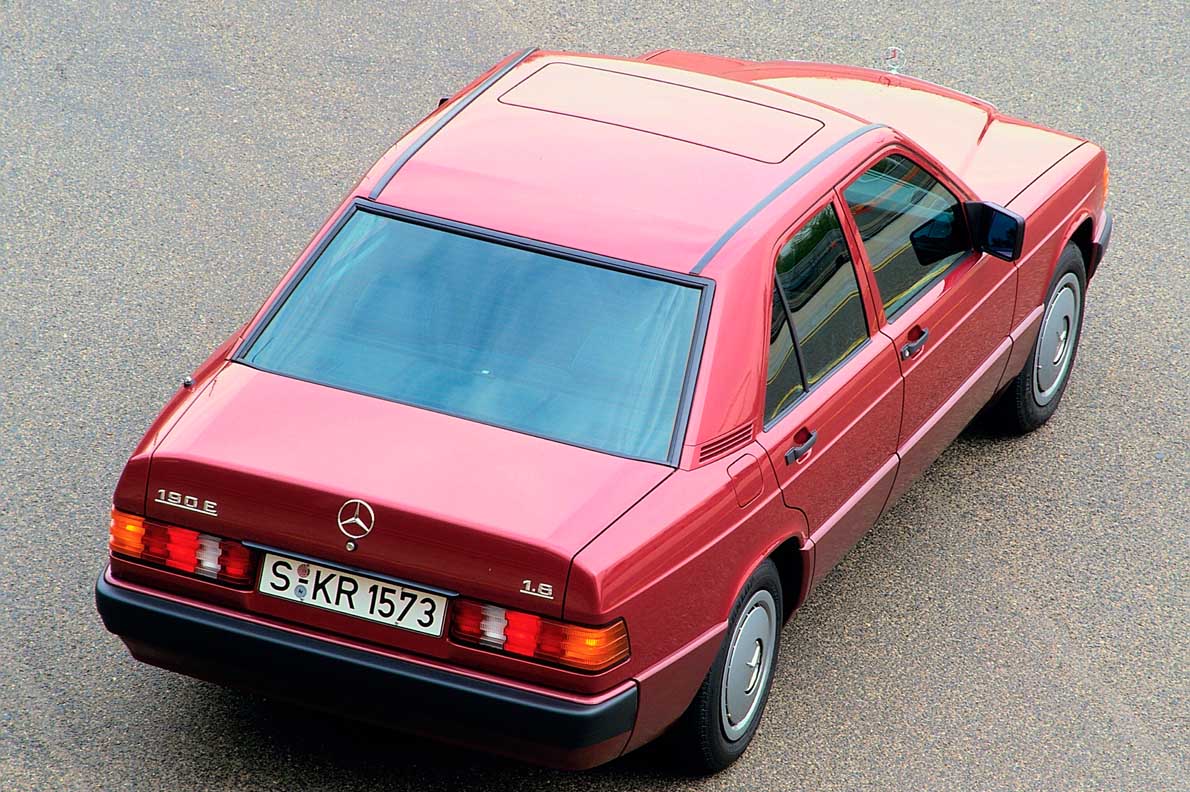
Mercedes-Benz C-Class and predecessor model series since 1982
The C-Class is still one of the highest-volume model series made by Mercedes-Benz. Since 2016, China has been the largest sales market for the saloon, followed by the USA, Germany and the United Kingdom, where the estate also plays a key role. There are C-Class customers in more than 100 markets around the globe. Its uninterrupted history began in the 1980s with the launch of the Mercedes-Benz 190 of the W 201 model series. Its premiere contributed to the significantly younger and fresher perception of the brand.
Mercedes-Benz proceeded to make the compact model class ever more diverse: the W 201 model series was followed in 1993 by the 202 model series (saloon 1993 to 2000, estate 1996 to 2001). It was called the C-Class for the first time and introduced the estate. The sports coupé was introduced in the 203 model series (saloon 2000 to 2007, estate 2001 to 2007, sports coupé 2000 to 2011 – from 2008 as CLC) and was replaced by the coupé in the 204 model series (saloon and estate 2007 to 2014, coupé 2011 to 2015). In the 205 model series (saloon, long-wheelbase saloon and estate since 2014, coupé since 2015 and cabriolet since 2016), the cabriolet followed as the fourth body variant. The C-Class can boast a number of close relatives: SLK (from 1996) and SLC (until 2020), GLC (from 2008, initially labelled the GLK), GLC Coupé (since 2016) and the all-electric EQC (since 2019). Well over ten million cars of the saloon and estate versions alone have been delivered to customers all over the world since the debut of the 190. The new C-Class 206 model series will be launched in spring 2021.
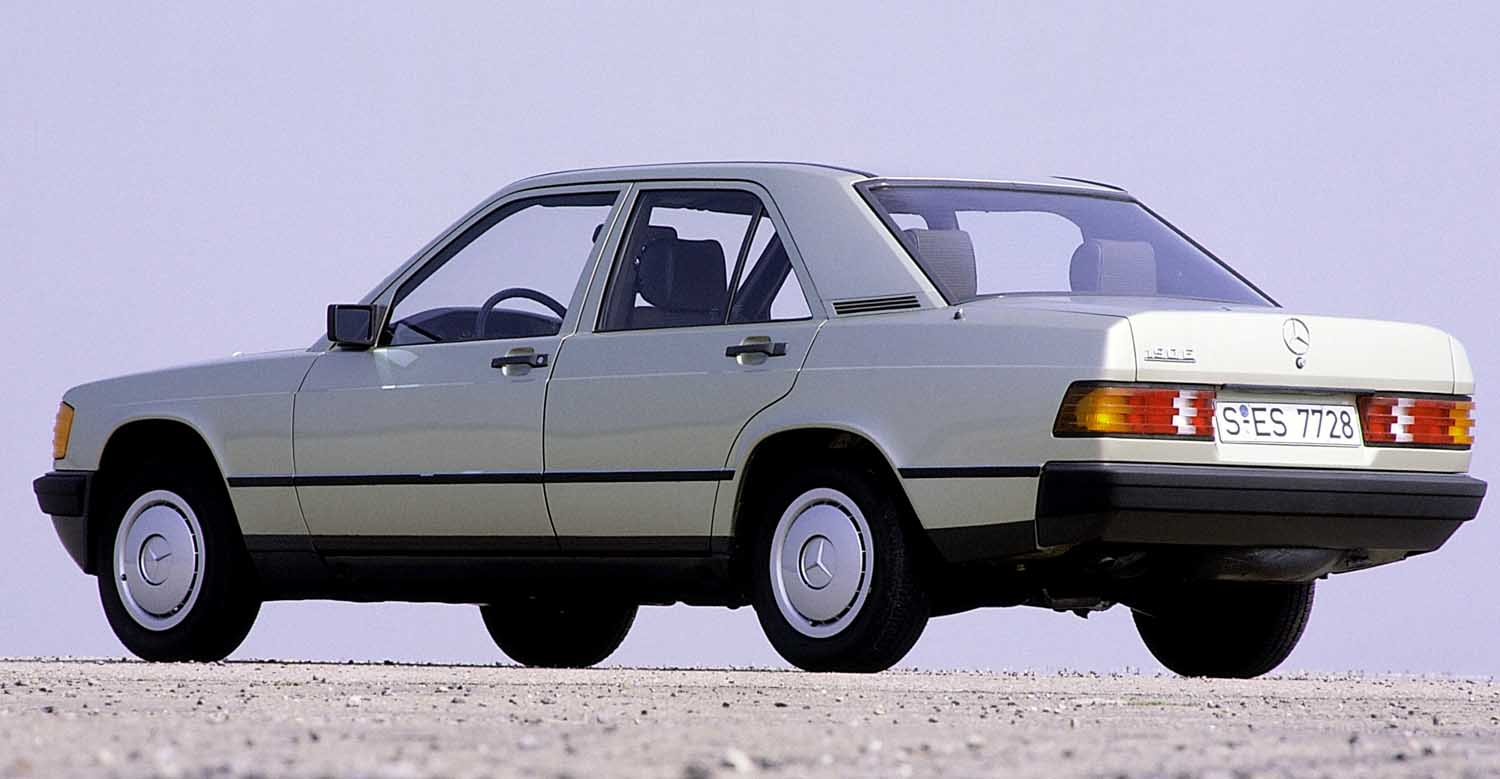
Debut of the compact model class: The W 201 model series (1982 to 1993)
When it was launched in November 1982, the fresh and agile design, clear wedge shape and fine lines of the Mercedes-Benz 190 caused heads to turn. Internally, the saloon was referred to as a compact model”. The “Baby Benz” was what customers in the USA initially called the car. The lines of the Mercedes-Benz upper medium-size category and the luxury and premium classes with their powerful identifying character served as a reference for this development. Compared to these, however, the W 201 model series was more compact, lighter and more economical. Its technical highlights included the specially developed chassis with its multi-link independent rear suspension. This design largely compensated for lateral and longitudinal forces in all driving conditions. As the debut of the model series, Mercedes-Benz presented the 190 and 190 E models in 1982. These were followed in 1983 by the 190 D with a quiet diesel engine and in 1984 by the sporty 190 E 2.3-16 with four-valve technology. Mercedes-Benz continued development of the model series. A highlight of the 1988 facelift was the 190 E 2.5-16 (143 kW/195 hp), which also served as a successful basis for DTM racing cars. In 1992, special models designed to appeal to younger buyers underlined how successful the model series had been in attracting new target groups to the brand. After a final facelift in 1991, production of the W 201 ended in August 1993, by which time a total of 1,879,630 vehicles of the model series had been built.
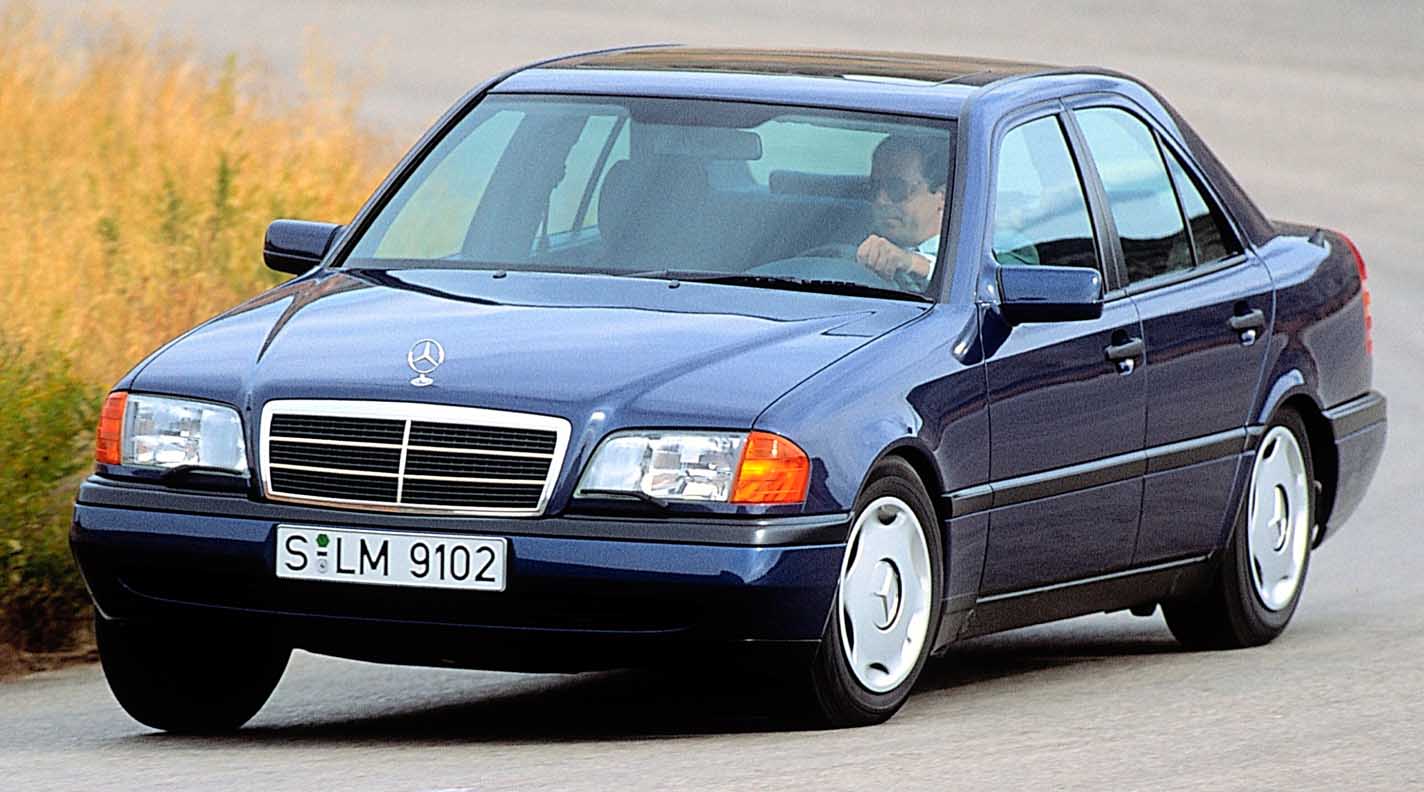
The first C-Class: Model series 202 (saloon 1993 to 2000, estate 1996 to 2001)
The 202 model series premiered in May 1993. It bore the name C-Class for the first time – in line with the naming convention of the S-Class, which had been applied since 1972. The letter “C” was followed by a three-digit number referring to the engine capacity. With similar exterior dimensions, the C-Class offered more space and comfort than the W 201 model series. The estate (S 202) appeared in 1996 as a sporty, compact beast of burden. Various design and equipment lines (CLASSIC, ESPRIT, ELEGANCE and SPORT) underlined the individual character, and this was embellished optionally with an AMG styling package. 1995 saw the launch of the supercharged C 230 Kompressor (142 kW/193 hp): for the first time in more than 50 years Mercedes-Benz fitted a passenger car with a Roots blower. The debut of the C 220 CDI (92 kW/125 hp), the first Mercedes-Benz passenger car with a direct-injection diesel engine based on the common rail principle, was a sensation when it launched in 1997. The top-of-the-range model was the C 36 AMG (206 kW/280 hp) when it became available in September 1993. In 1997, the C 43 AMG (225 kW/306 hp) followed as the first C-Class with a V8 engine. The C 55 AMG (255 kW/347 hp) took over the top spot in the following year. From 1992 to 2001, a total of 1,626,383 saloons (W 202) and 243,871 estates (S 202) of the 202 model series were built.
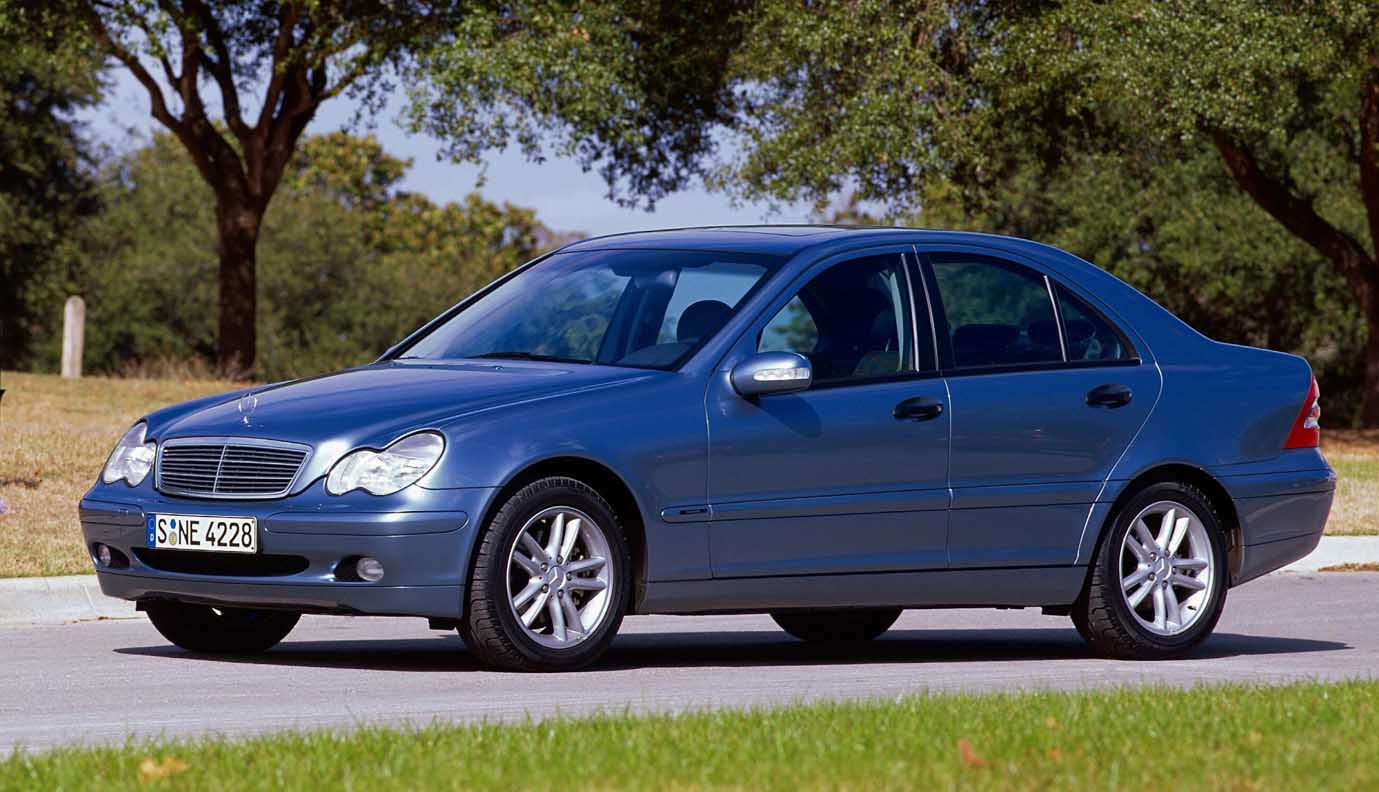
Twin headlamps for the C-Class: The 203 model series (saloon 2000 to 2007, estate 2001 to 2007, sports coupé 2000 to 2011 – from 2008 as CLC)
In March 2000 Mercedes-Benz presented the 203 model series. For the first time, there were three body versions of the compact premium car: the saloon (W 203) was joined by the estate (S 203, 2001) and, for the first time, the sports coupé with a central star in the radiator grille (CL 203, 2000). The twin-headlamp appearance of the front was particularly striking, reflecting dynamism coupled with elegance. Customers could choose between the CLASSIC, ELEGANCE and AVANTGARDE design & equipment lines. As a technology leader, the 203 model series introduced many innovations to the market segment, e.g. window airbags, multifunction steering wheels and a central display. Many assistance systems to promote active safety were included as standard features. Other new developments were the three-link front axle and the easily exchangeable front module incorporating crumple zones made of high-strength steel. The drag coefficient of 0.26 was a pioneering achievement. From spring 2001, the top-of-the-range model was the C 32 AMG (260 kW/354 hp) with a supercharged V6 engine. 2004 saw the launch of the facelifted 203 model series, with the C 55 AMG (270 kW/367 hp), featuring the first eight-cylinder engine in the model series. In 2005, the first Mercedes-Benz V6 engine with quadruple camshaft phasing followed in three performance variants. From 2000 to 2007, Mercedes-Benz produced a total of 1,529,921 saloons (W 203) and 373,873 estates (S 203) of the 203 model series and, by 2008, some 310,709 sports coupés (CL 203) as well. The two-door model was particularly successful with young target groups and customers new to Mercedes-Benz. After a comprehensive facelift , it continued to sell as the CLC-Class until 2010.
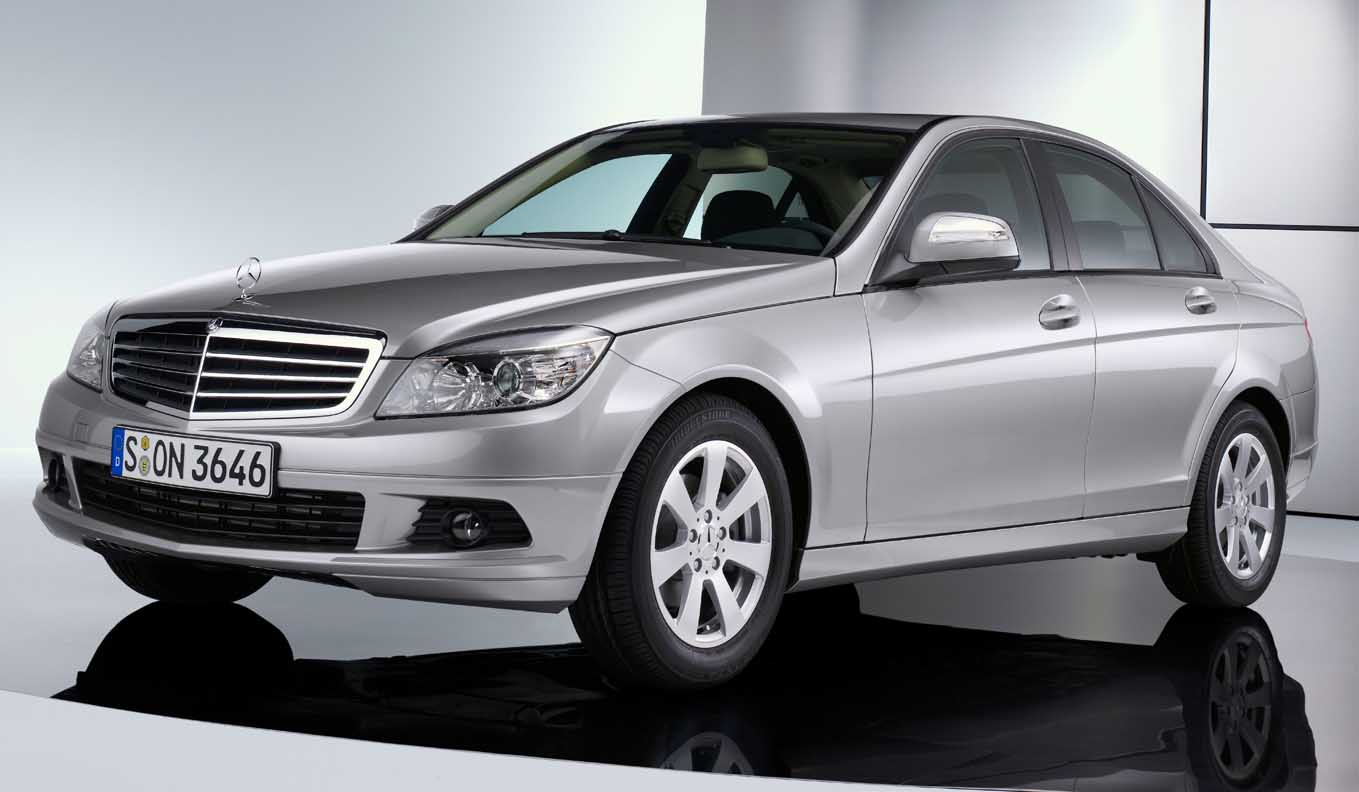
Outstanding faces of the C-Class: The 204 model series (saloon and estate 2007 to 2014, coupé 2011 to 2015)
The C-Class 204 model series premiered in January 2007. The saloon (W 204) was followed by the estate (S 204) in the autumn of 2007. The coupé (C 204) appeared in 2011. Compared to its predecessor, the 204 model series had grown in all its dimensions, which further improved spaciousness and comfort. The design, with its taut lines, clear sweep of the front and large, unfussy surfaces exuded technical self-assuredness. For the first time, Mercedes-Benz offered a choice of two different vehicle faces: the AVANTGARDE equipment line with a Mercedes star centrally positioned in the radiator grille was more sports orientated, while ELEGANCE and CLASSIC boasted the classic Mercedes radiator grille with the star on the bonnet. The latter models stood more for comfort and elegance. The AMG Sports package emphasised the sporty appearance. From 2007, the C 63 AMG (336 kW/457 hp) with a V8 engine was the top-of-the-range model. 2008 saw the launch of the C 350 CGI BlueEFFICIENCY with the world’s first petrol engine with spray-guided direct injection. In March 2011, the C-Class Coupé (C 204) was presented, based on the saloon platform. A highlight was the high-performance C 63 AMG Black Series (380 kW/517 hp) presented in mid-2011, which was only available as a coupé. For the saloon and estate models, the C 63 AMG Edition 507 (372 kW/507 hp) was the most powerful C-Class option from 2013. A total of 2,417,117 vehicles of the 204 model series were produced at the Mercedes-Benz plants in Sindelfingen, Bremen, East London (South Africa) and Beijing (China) by the end of 2013. These included 1,836,349 saloons, 429,939 estates and 150,829 coupés.
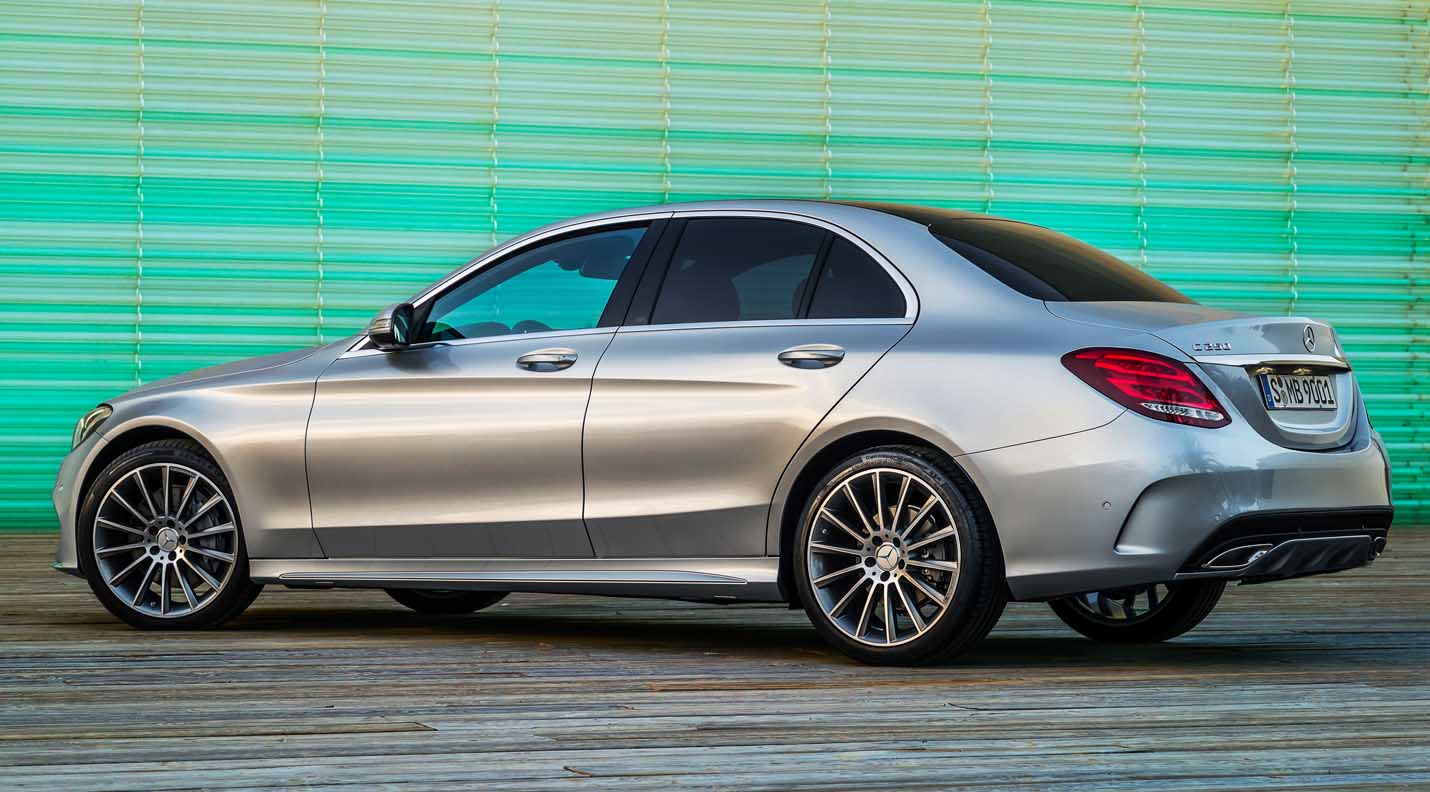
Wide range of variants in the C-Class: The 205 model series (saloon, long-wheelbase saloon and estate since 2014, coupé since 2015 und cabriolet since 2016)
In January 2014, the Mercedes-Benz C-Class of the 205 model series made its debut, initially as a saloon. The other body variants appeared in quick succession: the estate (S 205, May 2014), a long-wheelbase version of the saloon for China (V 205, August 2014), the coupé (C 205, August 2015) and, for the first time in the direct tradition of the C-Class, the cabriolet (A 205, February 2016). The extensive range of engines with outputs from 85 kW (116 hp) to 375 kW(510 hp) in the top-of-the-range model C 63 S) also included modern hybrid and plug-in hybrid units. Ultra-high-strength steels and extruded aluminium profiles made the saloon’s body structure 50 kilograms lighter than a pure steel construction. The outstanding overall rigidity contributed to the excellent handling with optimum freedom from noise and vibration. The AIRMATIC air suspension was available for the first time, a unique feature in this vehicle class. The Cd value of 0.24 in the lowest-price BlueEFFICIENCY version was a new best value in this vehicle class. In terms of safety, the 205 model series boasted a range of assistance systems. In addition to the familiar airbags, the model series was equipped with pelvis airbags, deployed sideways from the doors, as well as a newly developed window airbag, side airbags for the outer rear passengers and a knee airbag for the driver. The 2018 facelift provided, amongst other things, optional MULTIBEAM LED lights with ULTRA RANGE Highbeam and the Intelligent Light System. In the interior, a fully digital instrument display was now available, amongst other features. The new four-cylinder engines M 264 and OM 654 formed the basis of a modular engine system and enabled a range of drive variants to be offered.
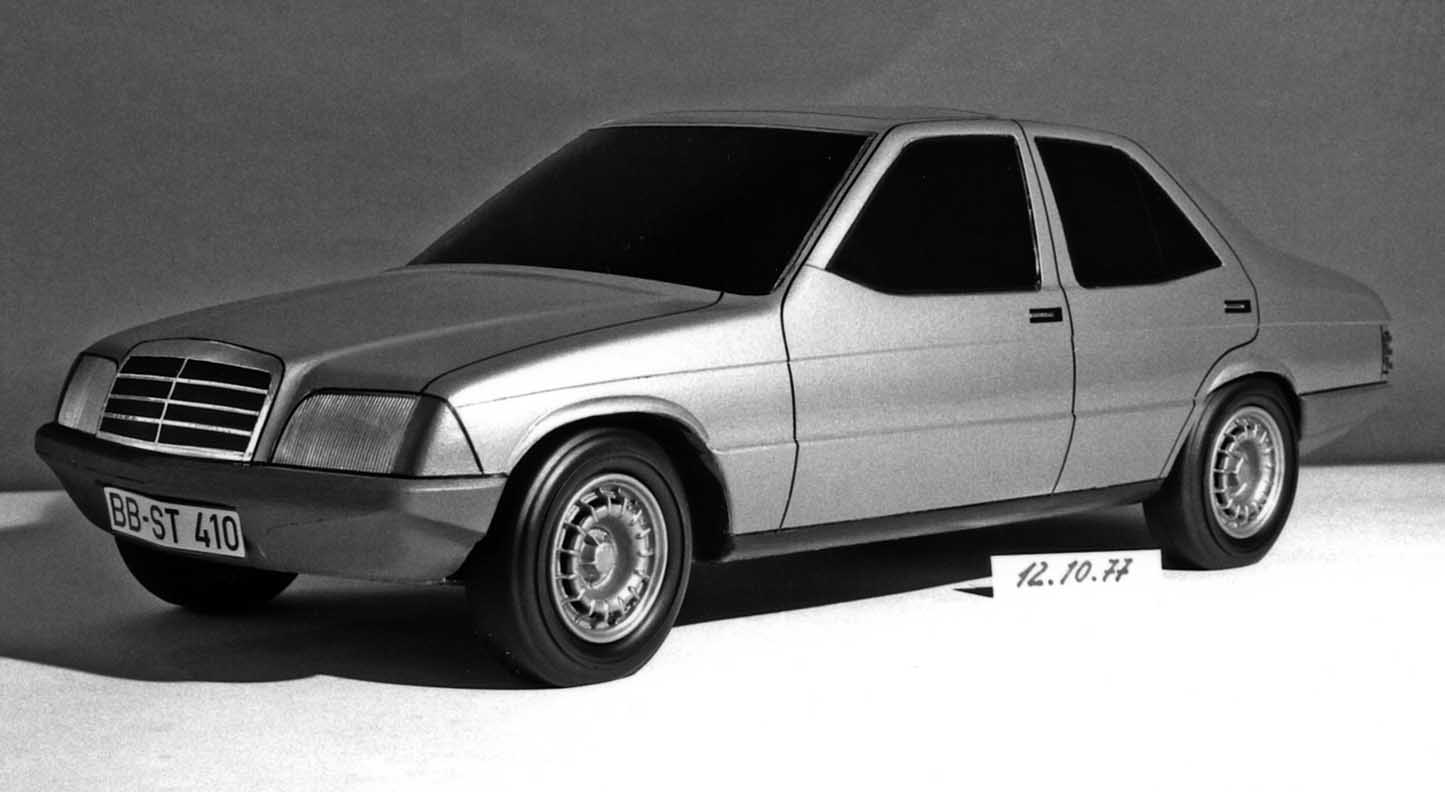
Innovations and facts: Mercedes-Benz C-Class and the predecessor model series
Mercedes-Benz compact models in the W 201 model series (1982 to 1993)
- Sustainable market entry in a new vehicle category, intended also to attract younger customers
- Multi-link independent rear suspension with five independent links for very balanced handling characteristics set standards in chassis technology
- Shock absorber strut independent front suspension with anti-brake dive functionality, mounted on individual wishbones
- Forked support structure of the front section for greater passive safety, especially in head-on collisions
- Mechanical-electronic injection system Bosch KE-Jetronic for the petrol engines
- Diesel engine with external noise insulation in the 190 D earns the nickname “whisper diesel”, power unit was considered a pioneer of modern Mercedes-Benz diesel technology
- Lightweight construction with high-strength steel panelling and other innovative materials resulted in a vehicle weight of only 1,180 kilograms for the Mercedes-Benz 190
- Twenty-five test vehicles, 53 pre-prototypes and prototypes as well as 40 vehicles for the pilot model series and homologation, a total of more than five million test kilometres
- First new Mercedes-Benz passenger car since 1968 without a parking brake in the footwell, fitted instead with a handbrake lever between the front seats
- Top-of-the-line model 190 E 2.3-16 with newly designed four-valve cylinder head (1984)
- Single belt drive, hydraulic valve play compensation and hydraulic engine mounts for 190 and 190 E (1984)
- 15-inch wheels, electrically heated windscreen washer nozzles and mono-post windscreen wipers with much extended eccentric sweep (January 1985)
- Clear stylistic relationship between the upper mid-range 124 model series presented in 1984 and the compact models
- Power steering and electric exterior mirror heating as standard equipment (September 1985)
- Five-cylinder diesel engine in the 190 D 2.5 (1985)
- In-line six-cylinder engine in the 190 E 2.6 by integrating the large drive unit into the comparatively restricted engine compartment of the W 201 (1985)
- Regulated emission control system for all models with petrol engines as standard equipment (September 1986), on request catalyst retrofit version for later installation of the three-way catalytic converter (until 1989)
- Exhaust gas turbocharger in the 190 D 2.5 Turbo paved the way for a sporty diesel engine. Increased performance compared to the 190 D 2.5 from 24 kW (32 hp) to 90 kW (122 hp), 192 km/h top speed (1987).
- Production of the W 201 model series reached 1 million vehicles (March 1988)
- Facelifted compact models with stylistic revision of the body and redesigned interior, amongst other things, with lateral rub strips, similar to those on the coupés of the 124 model series, and more voluminous bumpers (September 1988)
- Sixteen-valve 190 E 2.5-16 (143 kW/195 hp) was the new top-of-the-range model in the W 201 model series and, even with a catalytic converter, surpassed the performance of its predecessor, the 190 E 2.3-16 (1988)
- Homologation cars for the future DTM racing touring cars: High-performance saloons 190 E 2.5-16 Evolution (1989) and 190 E 2.5-16 Evolution II (1990), built as small-run model series
- As part of the “Diesel ’89” initiative, all models with diesel engines were given revised engines with reduced particulate emissions (1989)
- SPORTLINE package with suspension lowered by 21 millimetres, tauter suspension, light-alloy wheels with wide tyres and seats from the sixteen-valve versions (1989)
- Petrol engine models with carburettors discontinued with 190 E 1.8 as the successor of model 190 (1990)
- Emission control system with oxidation catalyst and exhaust gas recirculation for diesel models with naturally aspirated engines (autumn 1990) and for turbodiesel models (spring 1991)
- As part of a further facelift, all models except the 190 D and 190 E 1.8 were fitted with the ABS anti-lock braking system as standard equipment (1991)
- 4,600 special models of the 190 E 1.8, 190 E 2.3 and 190 D 2.5 in AVANTGARDE versions with pearl coat paint finish in bold colours (ROSSO, AZZURRO and VERDE) and youthful design appeal (1992)
- Production in the Sindelfingen and Bremen plants with exchange of body components and supply from other locations with engines, transmissions and axles (Untertürkheim) and steering gear (Düsseldorf)
- Production numbers: 1,879,630 saloons
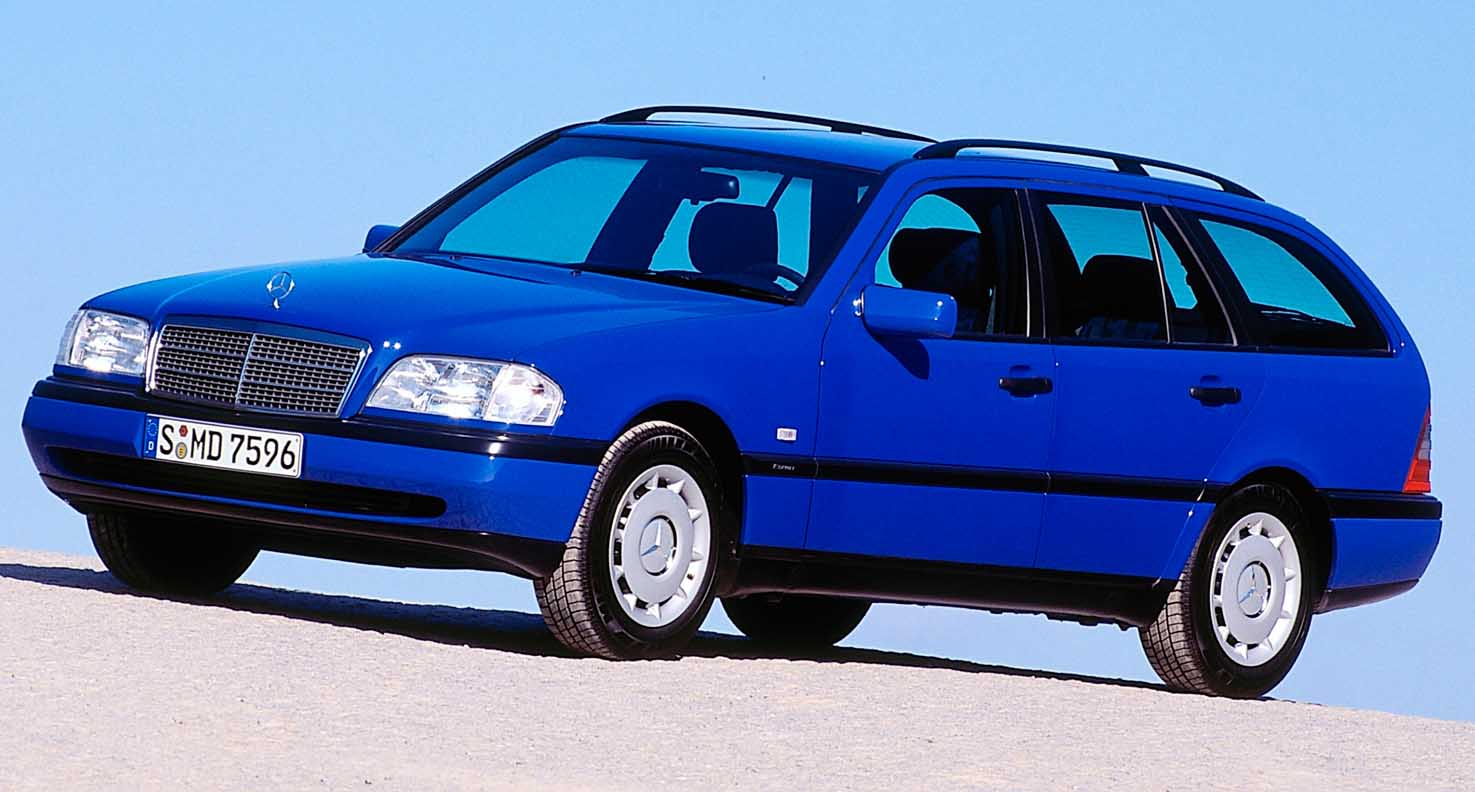
Mercedes-Benz C-Class model series 202 (saloon 1993 to 2000, estate 1996 to 2001)
- The compact class was called the C-Class for the first time, analogous to the S-Class, and the E-Class launched later in the year followed suit
- Significantly expanded range of engine options compared to the debut of the W 201 model series in 1982
- The letter “E” in the model designation was dropped because differentiation between petrol engine models with carburettors and petrol injection was no longer necessary. The letter “D” was replaced by the word “Diesel”.
- New concept of design and equipment lines with the variants CLASSIC (under this name from 1995), ESPRIT, ELEGANCE and SPORT. CLASSIC and ELEGANCE were the most popular, accounting for more than a third of all vehicles sold.
- AMG equipment package with lowered sports suspension, AMG-design light-alloy wheels, modified front and rear aprons and discreet side skirts
- Newly developed diesel engines with four-valve technology in C 220 Diesel and C 250 Diesel (1993)
- C 36 AMG with a six-cylinder engine as the first top-of-the-range AMG model for the C-Class (1993)
- Production milestone: 500,000 vehicles of the 202 model series produced (February 1995)
- C 230 Kompressor with Roots blower recalls the heyday of Mercedes-Benz supercharged vehicles in the 1920s and 1930s (1995)
- C 250 Turbodiesel: First turbo diesel passenger car with four-valve technology and charge air cooling (1995)
- Unified, modified four-cylinder petrol engines with hot-film air flow sensor (HFM system) for the injection system (1996)
- Five-speed automatic transmission with electronic control (1996)
- First estate in the tradition of the C-Class: A sporty S 202 on the same technical level as the saloon, with up to 1,510 litres of luggage compartment volume, which set standards (1996)
- 1997 facelift
- More dynamic design: New front and rear bumpers, side skirts painted in the colour of the vehicle, tinted rear lights, slightly modified radiator grille, new door panels and interior seat covers
- Extended standard equipment: Amongst other things, ASR traction control (except for entry-level models), side airbags at the front, power belt tensioners with belt force limiters at the front and BAS electronic Brake Assist. New features in the C-Class are the ELCODE drive authorisation system and ASSYST Active Service System
- New optional extras: E.g. PTS electronic parking aid (Parktronic system), APS (Auto Pilot System) route guidance system, adaptive cruise control (only with automatic transmission), rain sensor for windscreen wipers, xenon headlamps with dynamic headlamp range adjustment
- New V6 petrol engines with three-valve technology and dual ignition
- C 43 AMG (225 kW/306 hp) with newly developed 4.3-litre V8 engine (90-degree cylinder bank angle) and automatic transmission was the first C-Class with an eight-cylinder engine. New top-of-the-range model accelerated from standstill to 100 km/h in 6.5 seconds (September 1997)
- C 220 CDI (92 kW/125 hp): First diesel passenger car from a German manufacturer with common rail injection, 300 newton metres of torque from 1,800 rpm. Fuel was held in a common rail at injection pressure (up to 1,350 bar) and distributed to the injection nozzles via solenoid valves. The beginning of the success story of CDI technology developed with Bosch at Mercedes-Benz. (September 1997)
- New top-of-the-range model: C 55 AMG (255 kW/347 hp) with a 5.5-litre V8 engine (1998)
- Production numbers: 1,626,383 saloons and 243,871 estates
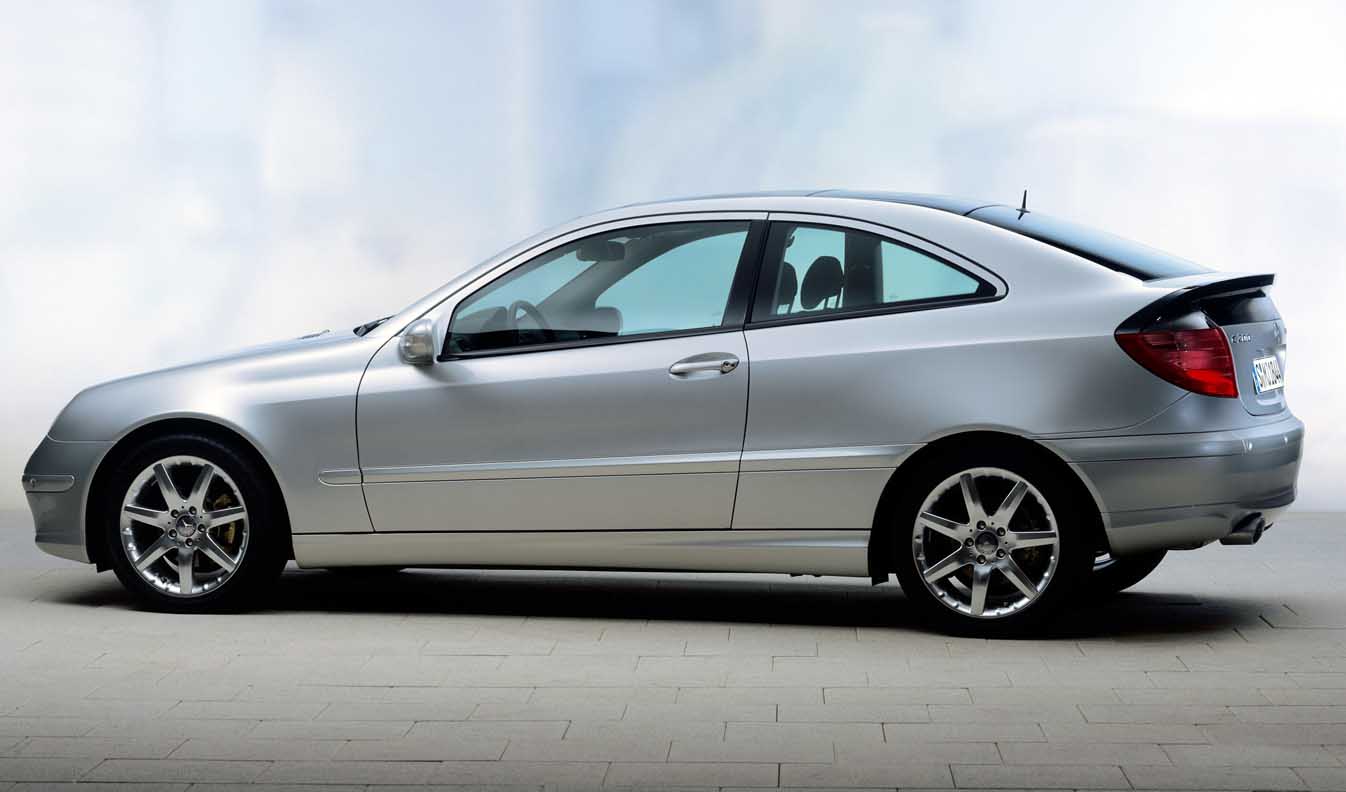
Mercedes-Benz C-Class model series 203 (saloon 2000 to 2007, estate 2001 to 2007, sport coupé 2000 to 2011 – from 2008 as CLC)
- New C-Class with completely new front-end design, characterised by four dynamically designed headlamps (March 2000)
- Three design and equipment lines CLASSIC, ELEGANCE and AVANTGARDE differing, amongst other things, in terms of body trim parts, wheels and interior design
- Extensive standard equipment with more than 20 technical innovations carried over from the Mercedes-Benz premium models made the C-Class the technology leader in its market segment
- Window airbags, adaptive airbags for driver and front passenger, automatic driving lights, multifunction steering wheel, central display, fibre-optic cables, amongst others
- Standard equipment for high level of safety included, e.g. ESP® Electronic Stability Program, Brake Assist, automatic child seat recognition, belt tensioners and belt force limiters in the front and on the outer rear seats, head restraints on all seats, side airbags in the front doors
- SPEEDTRONIC electronic cruise control and six-speed manual transmission also as standard equipment
- Front module with crumple zones made of high-strength steel for further improved passive safety and efficient repairability thanks to bolted connections
- New three-link front axle with McPherson struts for more precise handling
- Good aerodynamics with drag coefficient of 0.26 and up to 57 per cent lower lift on front and rear axles compared to the predecessor model series
- Market launch with seven new or more sophisticated engines with up to 20 per cent more power, up to 43 per cent more torque and in some cases significantly lower consumption than the predecessor model series
- Sports coupé (CL 203) complemented the C-Class with its new body style (October 2000)
- Sporty and youthful design appealed to a new target group, the brand’s hallmark louvred radiator grille with central star emblem, high tail end with integrated spoiler and dark-coloured panel between the rear lights
- Compact dimensions, body lowered by ten millimetres, yet sports coupé still offered four passengers plenty of spaciousness and comfort
- Panoramic sliding sunroof with continuous glass look offered a unique open-air feel when needed. When opened, the front half of the roof slid backwards, and the opening was around a third larger than with a conventional sliding roof.
- Premiere of the SEQUENTRONIC automatic six-speed transmission
- Optional EVOLUTION Sports package with, amongst other things, 17-inch light-alloy wheels, wide tyres, lowered sports suspension and sport leather steering wheel
- The estate (S 203) was technically closely related to the saloon, both body variants were developed at the same time (January 2001)
- Dynamic design with long, distinctively shaped roof, sweeping tail end and steeply raked rear roof pillars. Discreet spoiler in the upper part of the tailgate contributed to aerodynamics and driving stability.
- Depending on the position of the multifunctional rear seat system, between 470 and 1,384 litres of storage space, up to 1.5 square metres of loading area
- 2004 facelift with upgraded technology, equipment and design as well as new engines
- Sportier suspension, steering and six-speed manual transmission
- Modified front end with revised bumper, radiator grille and headlamps to emphasise dynamic character
- New cockpit design with attractive controls, line-specific seats and THERMATIC automatic climate control as standard equipment
- Bi-xenon headlamps with cornering light, steering wheel gear shift buttons for automatic transmission and new audio and navigation systems as optional equipment
- C 55 AMG (270 kW/367 hp) as the first eight-cylinder model in the 203 model series
- First V6 engine with four-valve technology and four-way camshaft phasing. Valves opened and closed at the most favourable time in every driving situation to improve load change behaviour. Variable intake manifold length according to engine speed for optimum torque and power.
- Production numbers: 1,529,921 saloons, 373,873 estates, 310,709 sports coupés
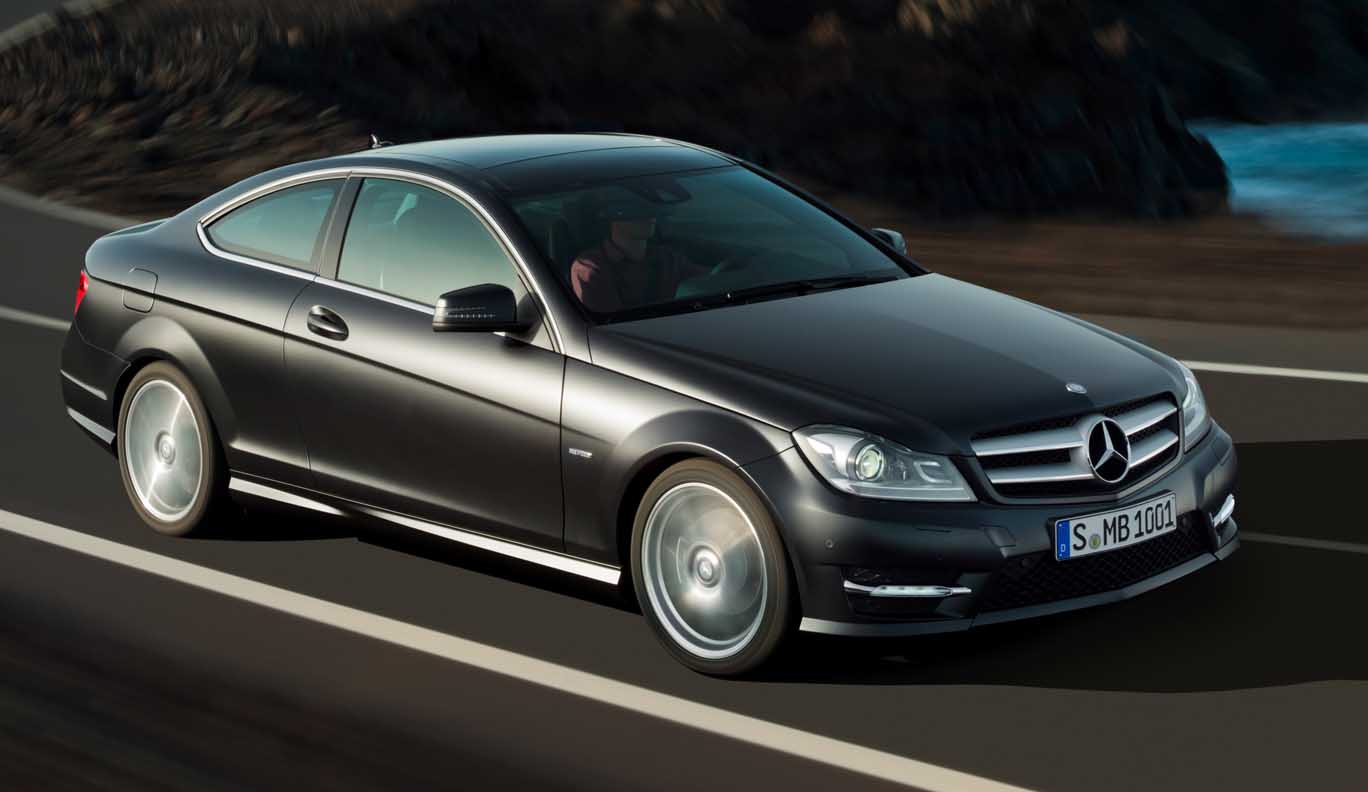
Mercedes-Benz C-Class model series 204 (saloon and estate 2007 to 2014, coupé 2011 to 2015)
- For the first time, design and equipment lines with two independent vehicle faces were available: AVANTGARDE with the Mercedes star centrally positioned in the radiator grille was particularly sporty and dynamic, while ELEGANCE and CLASSIC with the classic Mercedes radiator grille and star on the bonnet stood more for comfort and elegance
- Three body variants:
- Saloon (W 204, January 2007)
- Estate (S 204, autumn 2007)
- Coupé (C 204, 2011)
- New C-Class expanded in all dimensions compared to the 203 model series. The increases were particularly beneficial in terms of interior comfort, e.g. the front shoulder room was 40 millimetres larger than in the predecessor.
- Intelligently designed body consisted of 70 per cent high-strength and ultra-high-strength steel grades. Compared to the 203 model series, enlarged deformation zones and further optimised force flow with four independent impact planes in the front construction.
- Passive safety was checked during development in more than 100 crash tests
- Technical innovations
- AGILITY CONTROL package with shock absorber adjustment depending on the driving situation. From autumn 2007, ADVANCED AGILITY package with sports driving mode available as an option.
- ADAPTIVE BRAKE based on S-Class technology with additional functions such as starting-off aid for gradients, precautionary pressure build-up in the brake system in critical situations and dry braking of the brake discs in wet conditions
- PRE-SAFE® system with preventive protection measures as optional equipment, linked to driving safety systems such as the ESP® Electronic Stability Program and the BAS Brake Assist. The system was able to detect critical driving manoeuvres at an early stage. In the event of an impending accident, PRE-SAFE® could activate precautionary measures to prepare occupants and the vehicle.
- Intelligent Light System became available for the first time in the C-Class. High-intensity bi-xenon headlamps enabled five different light functions, adapted to typical driving and weather situations: country road light, motorway mode, enhanced fog light function, active light function and cornering light.
- Flashing brake lights warned following vehicles in case of hard braking from more than 50 km/h and reduced the risk of rear-end collisions
- Standard equipment with seven airbags: Adaptive airbags for driver and front passenger, knee airbag for driver, two side airbags in front seat backrests, two large-area window airbags stretching from A-pillar to C-pillar in the event of a severe side impact. Belt tensioners and belt force limiters as standard equipment for driver, front passenger and outer rear passengers. NECK PRO head restraints were able to reduce risk of whiplash injury.
- Engine options at market launch: Four- and six-cylinder engines with up to 13 per cent more power than the predecessor models while providing lower fuel consumption at the same time
- Efficient engines, consistent lightweight construction and good aerodynamics reduced consumption by up to 17 per cent compared to the 203 model series. 15 per cent lower carbon dioxide emissions (CO₂) over the entire life cycle compared to the predecessor.
- New operating and display concept carried over from the top Mercedes-Benz models. Quick access to frequently used functions. Colour display in the upper central area of the instrument panel. Link to the instrument cluster from the multifunction steering wheel, which was fitted as standard equipment.
- Production at Mercedes-Benz plants in Sindelfingen and Bremen and, from September 2007, right-hand drive versions in East London (South Africa) and, from March 2008, in Beijing (China)
- BlueTEC exhaust gas purification technology for diesel engines in combination with consumption-optimised four-cylinder engine in the Vision C 220 BlueTEC (February 2007)
- 4MATIC permanent all-wheel drive available for the six-cylinder C 280, C 350 and C 320 CDI models from summer 2007. Latest-generation all-wheel drive technology with higher efficiency, lower weight and more compact design than previous 4MATIC. C-Class combined 4MATIC with ESP® Electronic Stability Program and 4ETS traction system.
- C 63 AMG (336 kW/457 hp, 600 newton metres) presented as top-of-the-range model in summer 2007. AMG sports suspension with newly developed front axle, AMG sports speed-sensitive power steering and new 3-stage ESP®. AMG 6.2-litre V8 engine was derived from the engine in the AMG C-Class racing touring car. From April 2008, the C 63 AMG was the official DTM Safety Car.
- S 204 Estate was presented in autumn 2007
- Significant increase in space and variability compared to the S 203, also due to a steeper tail end compared to the predecessor
- Up to 1,500 litres of load capacity, maximum usable interior length up to 2.82 metres
- Load compartment with two bag hooks, four eyelets for securing loads and side stowage compartments with net retainers as standard equipment. EASY-PACK tailgate (optional) opened and closed at the touch of a button for the first time in the C-Class.
- Highest towing capacity in this vehicle class with up to 1,800 kilograms
- Level control keeps the ride height constant in any load condition (optional)
- Five stars for excellent results in crash tests according to the European NCAP procedure (December 2007). W 204 model series was one of the cars with the best safety standards according to the Euro NCAP organisation at that time.
- Particularly economical BlueEFFICIENCY variants: Fuel consumption reduced by up to 12 per cent through various measures and technologies (March 2008)
- Completely redesigned diesel engine generation in C-Class launched in autumn 2008
- C 350 CGI BlueEFFICIENCY with spray-guided direct petrol injection (end of 2008)
- Facelifted C-Class of the 204 model series. Revision with around 2,000 modified parts more extensive than usual (January 2011).
- More noticeably swept aluminium bonnet
- Downward-drawn front apron with LED daytime running lights
- Newly designed headlamps and tail lamps
- Revision and expansion of the engine range
- Instrument panel with multimedia screen integrated into the dashboard
- Extensive range of options for the facelifted C-Class
- Intelligent Light System: Variable light distribution, dynamic headlamp range control, Adaptive Highbeam Assist, active cornering light function
- Active Blind Spot Assist
- Active parking guidance
- Driving Assistance Package PLUS: DISTRONIC PLUS, Brake Assist BAS PLUS, PRE-SAFE® Brake
- Widespread introduction of direct-injection petrol engines
- 7G-TRONIC transmission (optional)
- Expansion of the engine range
- C-Class Coupé (C 204): First coupé based entirely on the platform of the C-Class Saloon (March 2011)
- C 63 AMG Black Series (380 kW/517 hp): Ultimate performance model, only available as a coupé. Amongst other things, with new engine control module, wider track, height-adjustable coilover suspension, special ESP® control and mechanical limited-slip differential. Track package and aerodynamics package optional for racetrack use (November 2011).
- C 63 AMG Edition 507 (372 kW/507 hp) as a high-performance model in the 204 model series in all three body variants (February 2013)
- Production numbers: 1,836,349 saloons, 429,939 estates and 150,829 coupés, a total of 2,417,117 cars.
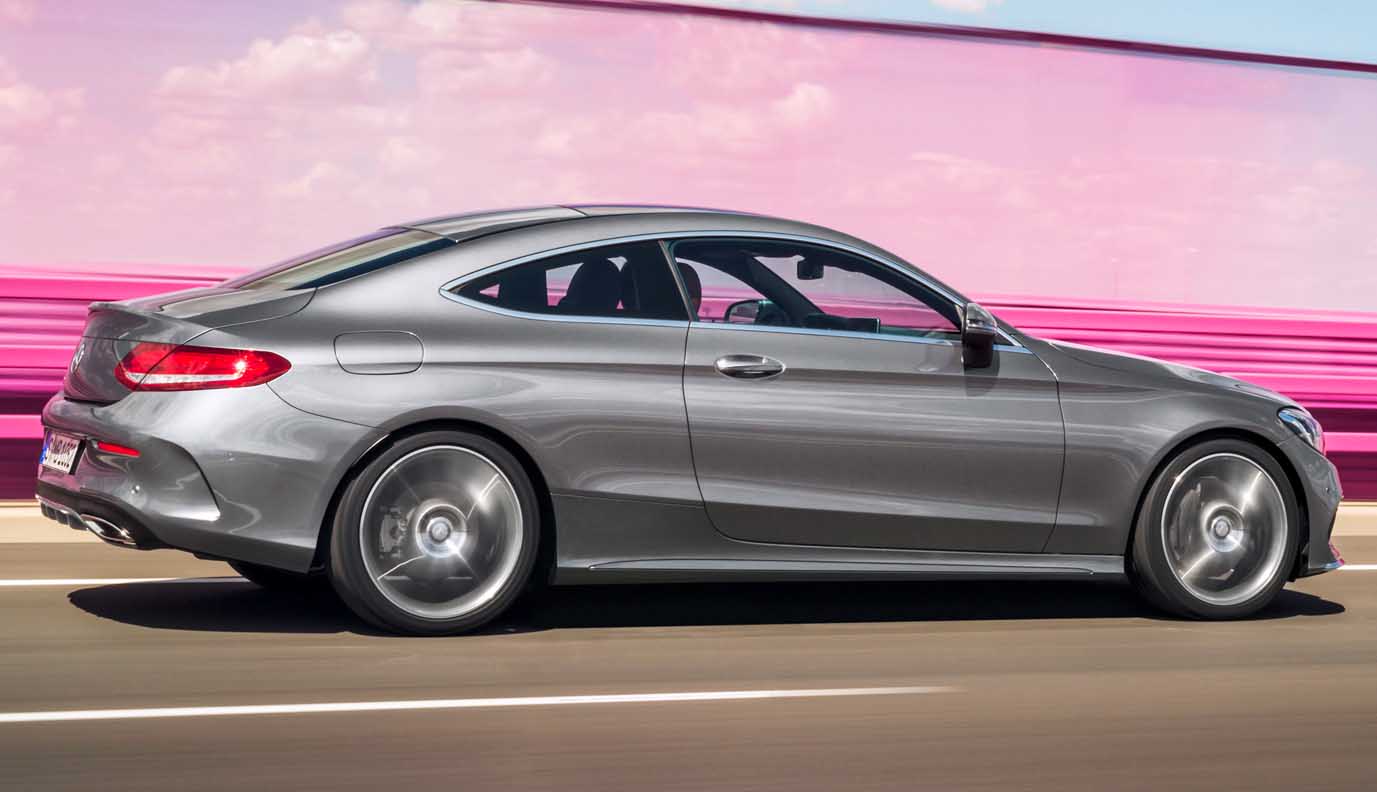
Mercedes-Benz C-Class of the 205 model series (saloon, long-wheelbase saloon and estate since 2014, coupé since 2015 und cabriolet since 2016)
- Three design and equipment lines for exterior and interior. AVANTGARDE profiles the C-Class as a sporty saloon, EXCLUSIVE conveyed upmarket status and modern luxury, AMG Line lent a distinctly sporty appearance.
- Five body variants: Saloon (W 205, January 2014), estate (S 205, May 2014), long-wheelbase version for China (V 205, August 2014), coupé (C 205, August 2015) and cabriolet (A 205, February 2016).
- Increased dimensions benefited rear passengers and increased luggage compartment volume
- Powerful, efficient petrol and diesel engines with up to 27 per cent lower fuel consumption than predecessor model series, all in compliance with Euro 6 emissions standard ahead of schedule
- C 300 BlueTEC HYBRID with four-cylinder diesel engine and compact electric motor produced 150 + 20 kW (204 + 27 hp) and had a diesel consumption of 3.6 litres (NEDC)
- Technological leap with intelligent body construction
- Lightweight construction: Aluminium hybrid body around 70 kilograms lighter than conventional steel construction. Total vehicle weight up to 100 kilograms lower than predecessor (saloon).
- Higher rigidity contributed to excellent handling with optimum freedom from noise and vibration
- Extremely rigid safety passenger cell
- Sophisticated pedestrian protection with Active Bonnet and interaction of BAS PLUS with Crossing Assistant and PRE-SAFE Brake
- Aerodynamics with best-in-class value: Cd figure = 0.24 in the lowest-price BlueEFFICIENCY version
- HANDS FREE ACCESS for the boot lid (optional)
- New sporty, agile chassis with exemplary suspension and ride comfort
- A first in the market segment: AIRMATIC air suspension on front and rear axle with continuous damping adjustment as an option. DYNAMIC SELECT with five driving characteristics.
- Air conditioning with automatic air recirculation via satellite navigation, AIR-BALANCE package with active fragrancing, ionisation of the air and high-performance filtration
- Allergy-friendly: ECARF Seal of Quality
- Internet link provided in connection with Audio 20 audio system with Bluetooth®-enabled mobile phones
- COMAND Online with hotspot functionality and LINGUATRONIC voice control system
- Innovative touchpad via rotary pushbutton on the centre tunnel: Operation via finger gesture or handwriting character input
- Head-up display: Important information was projected directly into the driver’s field of vision
- Electromechanical direct steering with sports character
- Mercedes-Benz Intelligent Drive: High level of safety with almost all new driving assistance systems from the E-Class and S-Class: ATTENTION ASSIST, COLLISION PREVENTION ASSIST PLUS. DISTRONIC PLUS with Steering Assist and integrated Stop&Go Pilot, BAS PLUS Brake Assist, extended Active Lane Keeping Assist, Active Parking Assist, 360-degree camera, Traffic Sign Assist with wrong-way warning function and Adaptive Highbeam Assist PLUS
- Airbags: Side bags for driver and front passenger with additional masking of the pelvis area, newly developed window airbags, side airbags for outer rear passengers (optional), knee airbag for driver
- Front passenger seat with new, automatic child passenger airbag deactivation (optional). Compared to the predecessor model series, there was no longer a need for a transponder in the child seat.
- Top models: Mercedes-AMG C 63 (350 kW/476 hp, 650 newton metres) and C 63 S (375 kW/510 hp, 700 newton metres) (September 2014)
- S 205 Estate presented in May 2014
- Rear seat backrests unlocked electrically and folded down automatically at the touch of a button
- Electric EASY PACK tailgate
- Lightest bodyshell in the segment with 49 per cent aluminium content, up to 65 kilograms lighter than predecessor
- C 205 Coupé presented in August 2015
- Increased space especially for driver and front passenger
- Front seats with automatic seat belt extenders
- The only vehicle in the segment optionally available with AIRMATIC air suspension
- A 205 Cabriolet launched in February 2016
- Fully automatic soft top, opens at up to 50 km/h in 20 seconds
- AIRCAP automatic draught stop system with electric draught stop and AIRSCARF head space heating (optional)
- Quietest cabriolet interior in the vehicle segment
- The only vehicle in the segment optionally available with AIRMATIC air suspension
- Facelift in June 2018
- Digital dashboard and larger media display (both optional)
- Multimedia system with customised display and information options
- New multifunction steering wheel with touch control
- Digital vehicle key turns smartphone into key (optional)
- Anti-theft alarm system (optional) detects parking bumps and sends notification
- Update of the driver assistance systems with cooperative driver support: Active Distance Assist DISTRONIC and Active Steering Assist provide even greater convenience, Active Emergency Stop Assist, Active Lane Change Assist
- MULTIBEAM LED headlamps with ULTRA RANGE Highbeam (optional)
- New DYNAMIC BODY CONTROL suspension with three-stage adjustable damping characteristics and direct sports steering (optional)
- AIR BODY CONTROL air suspension with continuously variable damping control (optional)
- New engines and introduction of the 48-volt electrical system for high-efficiency sporty driving pleasure. EQ Boost provides an additional 10 kW (14 hp).
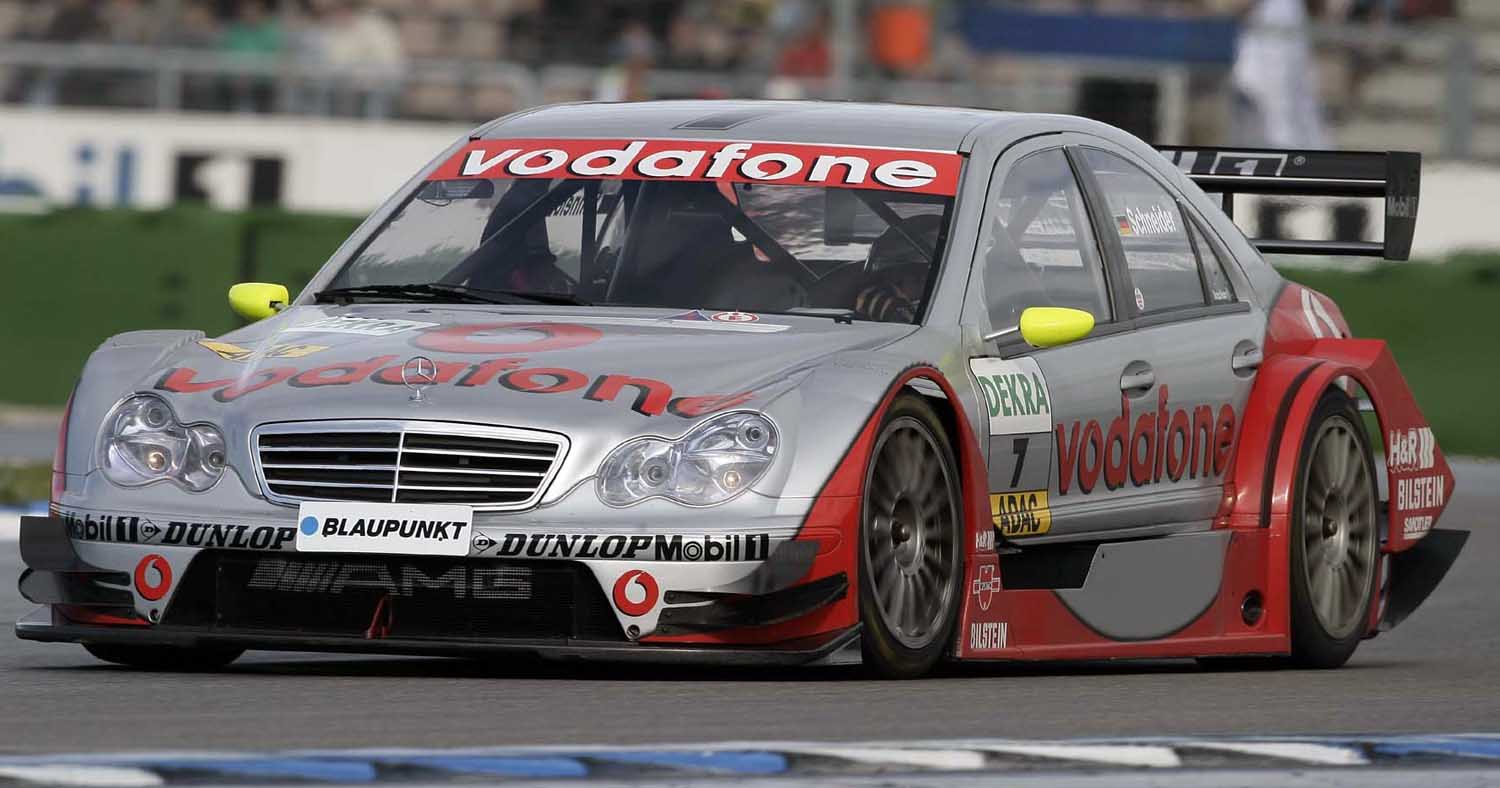
From the road to the race track: The C-Class and predecessor model series in motorsport
Even the Mercedes-Benz W 201 model series proved to be suitable for motorsport: the sixteen-valve engine presented in 1984 became synonymous with a sporty power pack from Mercedes-Benz. Successor model series continued this tradition.
Nardò and Nürburgring
The Mercedes-Benz 190 E 2.3-16 (W 201) set long-distance world records with average speeds of almost 250 km/h on the high-speed circuit in Nardò (Italy) in 1983.
The 190 E 2.3-16 had its motorsport premiere at the official opening race of the new Nürburgring on 12 May 1984. Twenty racing drivers, including many Formula One World Champions and Le Mans winners, competed in 20 identical vehicles provided by Mercedes-Benz. The winner was Ayrton Senna, who was still quite unknown at the time and later Formula One World Champion in 1988, 1990 and 1991.
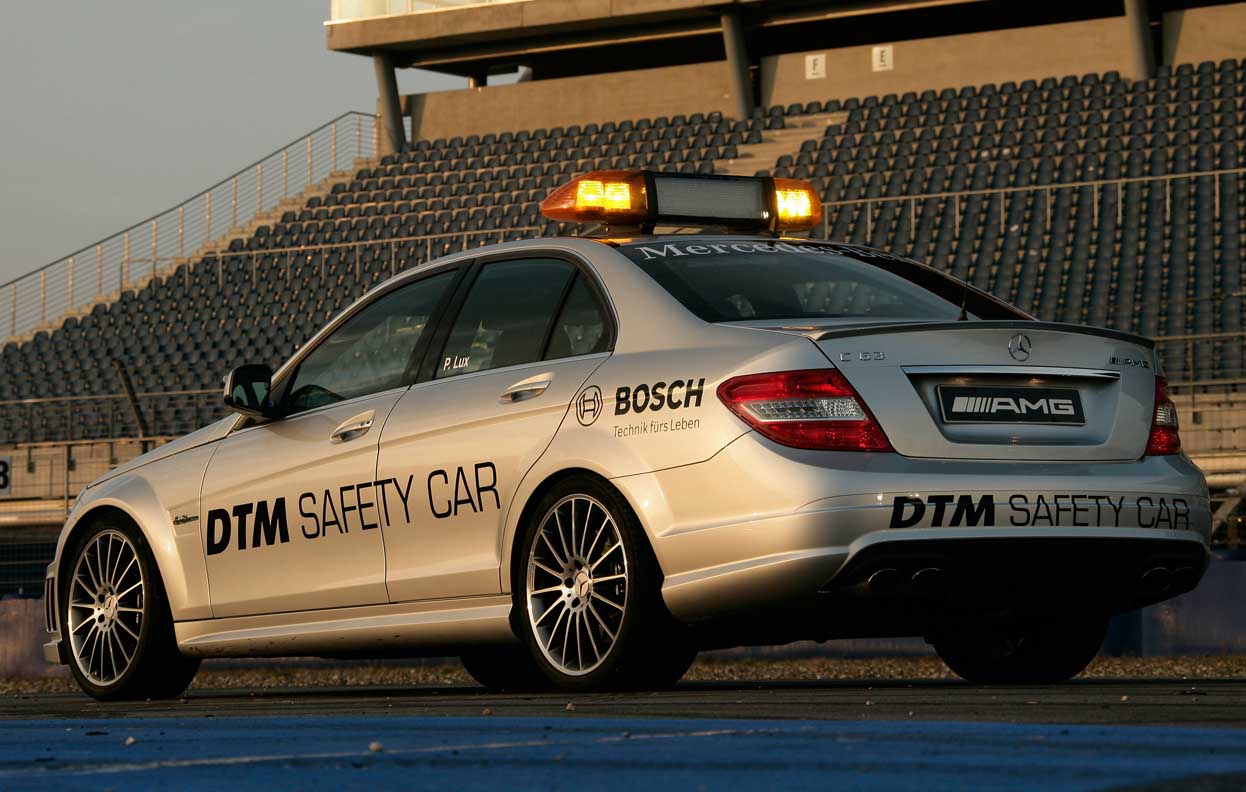
German Touring Car Championship (DTM)
Following a decision by the Board of Management of Daimler-Benz AG in January 1988, five Mercedes teams entered 14 190 E 2.3-16 cars in the highly competitive German Touring Car Championship. For the 1989 season, a new engine with a displacement of 2.5 litres was designed instead of the long-stroke standard engine. With minor modifications, this engine was used in two homologation model batches of 502 cars each. Performance-conscious private customers could buy road versions of the 190 E 2.5-16 Evolution (1989) and the further development Evolution II (1990).
The chassis and aerodynamics of the 190 E 2.5-16 Evolution were modified with a view to the intended DTM entry. Instead of manifold injection, the racing cars had electronic control (Bosch Motronic MS 2.7) and a higher compression ratio. The DTM racing touring car produced 245 kW (333 hp) and had a maximum torque of 290 newton metres at 7,000 rpm. In August 1989, preparations began for the second development stage for the 1990 racing season. Klaus Ludwig won the 1992 DTM in the EVO II, and Mercedes-Benz won the Constructors’ Championship.
With the AMG Mercedes-Benz 190 E Class 1 racing touring car, the W 201 model series reached the final stage of its development for motorsport in 1993. The racing touring car weighed 20 kilograms more than its predecessor, had an engine that had been moved downwards and backwards and a body that had been modified in parts. The engine specifications largely corresponded to those of the EVO II.
The 202 model series also competed in the DTM: in 1994, Klaus Ludwig won the Championship in the new AMG Mercedes C-Class with a six-cylinder engine. Concealed under the bodywork was thoroughbred racing technology. The car’s V6 engine with 294 kW(400 hp) was derived from the 4.2-litre V8 engine of the Mercedes-Benz S-Class (model series 140). In the 2005 AMG Mercedes C-Class racing touring car with a 324 kW(440 hp) V6 engine, the driver’s seat was moved further back and towards the centre of the car. Together with the roll cage, the bodywork was an integral unit. Bernd Schneider won the 2005 DTM title ahead of his teammate Jörg van Ommen. For the 1996 International Touring Car Championship (ITC), AMG built a racing touring car based on the C-Class with a 2.5-litre V6 engine (368 kW/500 hp) that achieved a top speed of 320 km/h. Bernd Schneider secured the runner-up title in the 1996 ITC.
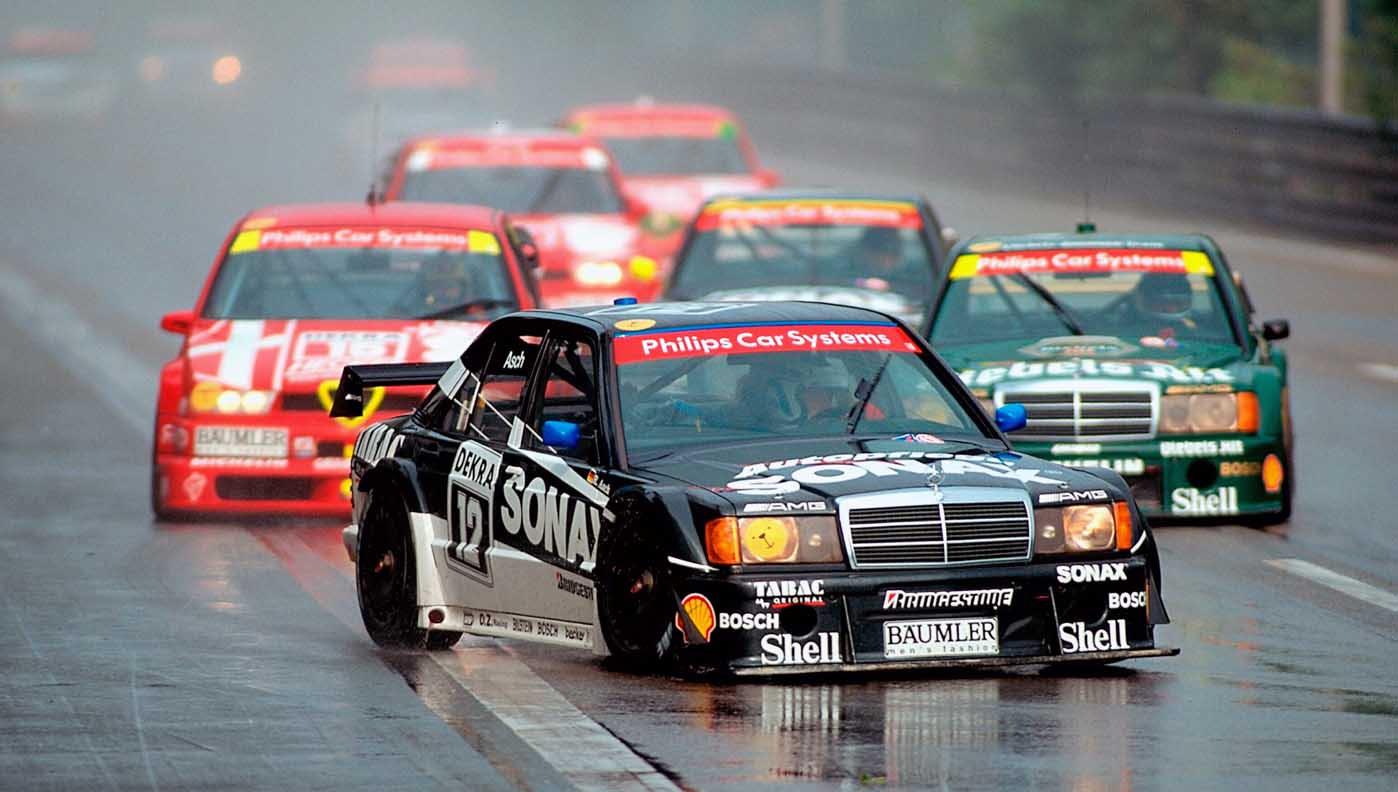
German Touring Car Masters (DTM)
In the German Touring Car Masters (DTM), Mercedes-Benz was active from 2004 onwards with a racing sports car bearing a close visual resemblance to the C-Class. The racing touring car had the same engine as the CLK, which had been used successfully since 2000 (2000, 2001 and 2003 Championships). Mercedes-Benz won the runner-up title (Gary Paffett) and third place (Christijan Albers) in the DTM with this AMG Mercedes C-Class in 2004, and Paffett won the race series in 2005. In 2006, Bernd Schneider won his fifth DTM title in the current model of the AMG Mercedes C-Class, while Bruno Spengler secured the runner-up title. The car’s V8 engine (350 kW/476 hp) had a capacity of four litres.
Mercedes-Benz participated from 2007 onwards with a touring car that was outwardly reminiscent of the C-Class 204 model series. The greatest success to date came in the 2010 season, when the racing division scored a triple victory for Mercedes-Benz in the DTM: Paul Di Resta won the title in an AMG Mercedes C-Class, followed by his teammates Gary Paffett and Bruno Spengler. Spengler went on to secure third place in the Championship in the 2011 season.
From 2012, the Stuttgart brand competed with its DTM AMG Mercedes C-Coupé, whose outer shape was based on the C 204. In that year, Gary Paffett was runner-up and Jamie Green secured third place in the DTM drivers’ ratings. From 2015 on, the racing touring cars bore the designation Mercedes-AMG C 63 DTM and were visually reminiscent of the C 205. In 2015, Pascal Wehrlein became DTM Champion; gooix/Original-Teile Mercedes-AMG won the Team Championship. In the C 63 DTM, the brand also participated successfully in its last year in the DTM in 2018: Gary Paffett took first place, Paul Di Resta came third in the Drivers’ Championship. Mercedes-Benz Motorsport also won both the Constructors’ and Team Championships.
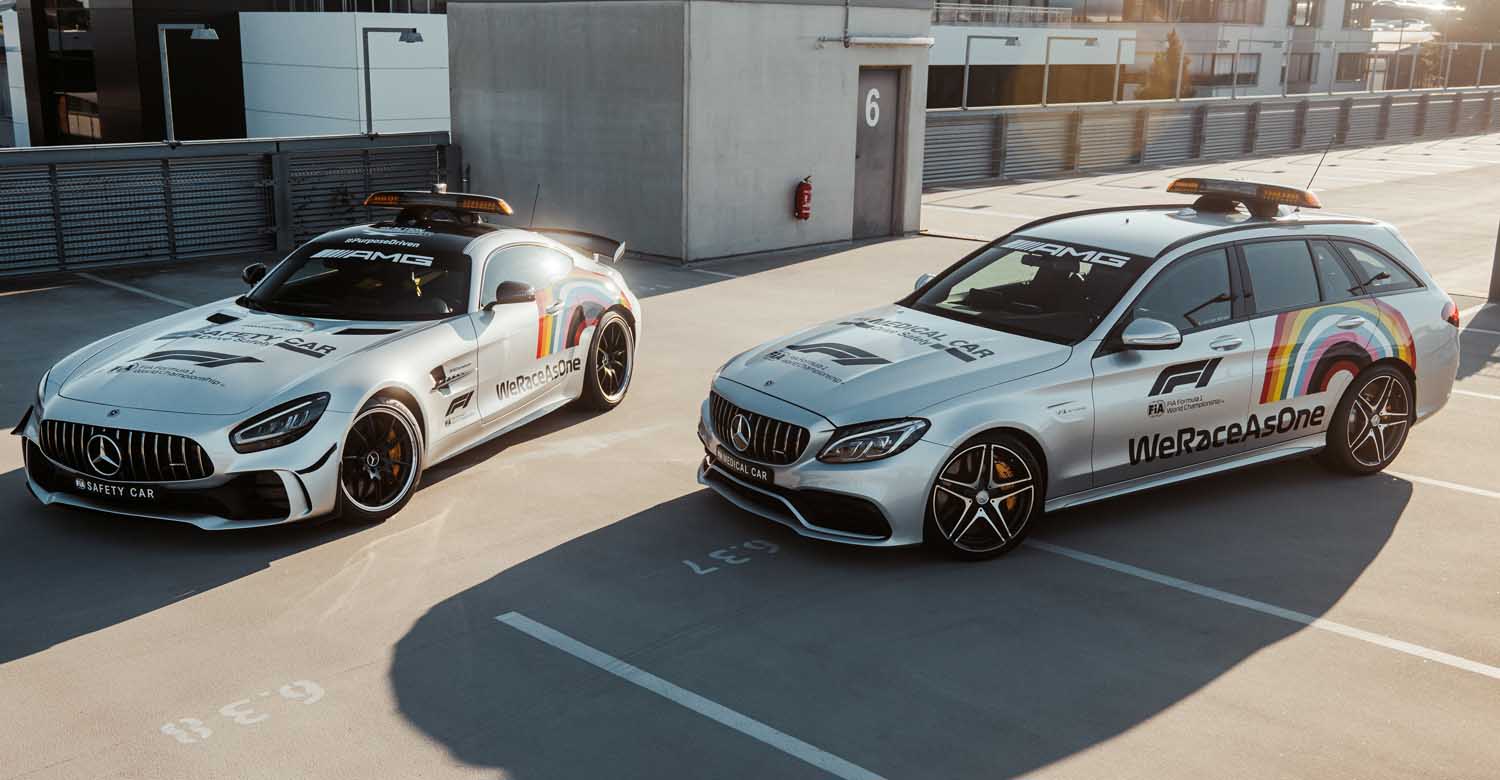
Formula One
In Formula One, the official Medical Car has been a Mercedes-AMG C 63 S Estate (S 205) since 2015. Its predecessors from the C-Class model series were the C 63 AMG Estate (S 204, from 2008), C 55 AMG Estate (S 203, from 2004), C 32 AMG Estate (S 203, from 2001), C 55 AMG Estate (S 202, from 1998) and C 36 AMG (S 202, from 1996). The C 32 AMG Estate as a Medical Car can be seen in the Mercedes-Benz Museum in Collection 3: Gallery of Helpers. A C 36 AMG (W 202) has been used as a Safety Car in Formula One from June 1996. Performance models of the C-Class are also used in the DTM as the official Safety Car.
Mercedes-Benz C-Class and predecessor model series in the international press
W 201 model series
“auto, motor und sport”, 15 December 1982, on the multi-link independent rear suspension of the W 201: “A true dream construction.”
“Neue Zürcher Zeitung”, 22 December 1982, on the W 201: “A refreshingly unconventionally shaped, modern car that is expected to inspire new, especially young buyers.”
“Road & Track”, November 1983, about the model 190 2.3: “We’re going to tip our hand and tell you that we think the Mercedes-Benz 190 E 2.3 is an outstanding 4-door sedan – perhaps the best in the world in its size class.”
“Frankfurter Allgemeine Sonntagszeitung”, 19 November 2006: “The compact model class was the first messenger from the future.”
Model series 202
“auto, motor und sport”, 21 May 1993, on the W 202: “In terms of ride comfort, the Mercedes clearly sets the standard in its class.”
“auto, motor und sport”, 15 December 1995, on the S 202: “With the C-Class Estate, Mercedes is penetrating the segment of small, fine-quality estate cars.”
“mot”, 10 January 1998, on the Mercedes-Benz C 220 CDI: “Culture is its discipline. Common rail separates injection from pressurisation; the pilot injection thus made possible compensates for ignition delay – the end of direct-injection noise.”
203 model series
“auto, motor und sport”, 3 May 2000, on the W 203: “For the first time in this class, you can nip round the bends in a Mercedes that is simply a joy to drive.”
“Road & Track”, October 2000, on the Mercedes-Benz C 230 (W 203): “Not only does this car represent the hippest, most stylish iteration to date, it also brings previously unavailable levels of sophistication to the entry-level luxury market. Competitors, take note: The bar has been raised.”
“auto, motor und sport”, 13 December 2000, on the S 203 Estate: “Born more for pleasure than for cargo.”
“mot”, issue 24/2003 of 5 November 2003 on the CL 203 Sports Coupé: “The rear-wheel-drive car’s suspension comes across as very mature, its handling firm and secure, also thanks to the standard ESP® system and the Brake Assist. And the chassis can cope with much more engine power – up to the AMG version with 354 hp.”
204 model series
“auto motor und sport” (Germany), 25 April 2007, about the supercharged Mercedes-Benz C 200 Kompressor (W 204): “The feeling that the car reacts precisely, that the steering provides intense driving pleasure and enables a clean cornering line as if by itself is not only a contribution to active safety but also to driving pleasure.”
Autorevue (Austria), issue 3/2013, about the Mercedes-Benz C 63 AMG Coupé Black Series (C 204): “This coupé condenses everything that makes AMG a legend into one car. […] The engineers evidently applied themselves with such attention to detail and conscientiousness that they are likely to be canonised.”
“Road & Track” (USA), issue 11/2007, about the Mercedes-Benz C 63 AMG (W 204): “Summing up, the strongest C-Class ever is tempting with finely honed driving dynamics, while providing more comfort than its German rivals.”
205 model series
“Autorevue” (Austria), issue 8/2014, on the Mercedes-Benz C-Class Estate (S 205): “There they are again, those sculptural, hammered and crafted shapes that Mercedes has been applying more and more of late. […] Mercedes has once again filled the word ‘premium’ with blossoming life. With noblesse and clear design.”
“auto motor und sport” (Germany), 7 August 2024, on the Mercedes-Benz C 220 BlueTEC (W 205): “The winner – despite the high price. It proves that it is worth it with outstanding comfort, comprehensive safety equipment and solid workmanship. Now more agile, but still a real Mercedes.”
“Autorevue” (Austria) calls the Mercedes-Benz C-Class of the 205 model series “the car of the decade”: “The current C-Class redefines this segment. With considerable self-confidence, Mercedes has nipped past the competition on the inside.”
